|
Have you heard of it? Wateroam has completed its 8-year journey on August 2022. To celebrate the company’s accomplishments thus far, I sit down with Wateroam’s co-founder and CEO, David Pong to learn about the company’s major milestones and proudest moments. Image: David Pong, Co-founder and CEO of Wateroam 1. Talk to us about your favorite “first” of Wateroam. Image: Wateroam's first prototype deployed for Flood Relief in Kelantan, Malaysia (2014/2015) David: Our first major product deployment saw the team being activated on the evening of New Year’s Eve in 2014. A flood had just happened in Malaysia and a partner NGO was about to head over to provide urgent aid relief the very next day. Our team readily dropped our new year’s eve plans, rushed down to the logistics centre, provided the NGO with our filters and conducted product training. By the time we completed the training late at night, we had a countdown together into the new year and marked a new beginning for Wateroam’s journey of impacting the world through clean water! 2. What did Wateroam’s first water filter look like? Describe the product development journey from the first launch to the most recent launch.
3. Who, according to you, is the backbone of Wateroam? Image: Family, the Backbone of Wateroam David: This definitely goes to the collective Wateroam family of current team members, former team members, interns and mentors. Wateroam would not have been possible without each and everyone of your contribution. All of you have seen us through the ups and downs and have never failed to encourage us through it. You’ve devoted your time and skills to making the impact on the ground a reality. We look forward to catching up with you in our next gathering. 4. Walk us through your vision of where you see the company in the next 8 years.David: The Wateroam team will continue to faithfully pursue our vision of building a world without prolonged thirst. There remains 2 billion people in the world without access to safely managed drinking water at home. We will be expanding our suite of solutions and researching into technologies that can accelerate the world’s effort in providing equal access to clean drinking water for all. 5. What are some of the major milestones of Wateroam?
6. What’s one thing you miss the most when looking back at the beginnings of your career at Wateroam?Image: Wateroam Communities in Sabah enjoying clean water David: In our early years of Wateroam, we didn’t have an office yet so we worked at any table we could find at the National University of Singapore (NUS). I remember fondly about how we would all squeeze into one table in the food court to conduct our team meetings amidst the aroma of food that lingered around us. We’ve definitely missed being on campus and working alongside hardworking NUS students! 7. If you could go back in time, what’s one piece of advice you would give yourself 8 years ago?Image: David living with villagers in Malaysia David: The journey of social entrepreneurship is not always an easy ride but perseverance and teamwork will be key to overcoming the obstacles. As a Nigerian writer, Ifeanyi, once said, “Teamwork is the secret that makes common people achieve uncommon results.” Hence, don’t underestimate a group of common people coming together in commitment to tackle a difficult problem! 8. Do you have any message for the team on this wonderful occasion?
Support our efforts with a contribution of any size Your support helps Wateroam deliver our solutions to children without access to clean water around the world. Your contribution, however big or small, is extremely valuable and gives life to communities all around the world. Wateroam is currently providing water filters to refugees and IDPs in Myanmar affected by the civil conflict.
If you would like to join David on his mission to end prolonged thirst, please offer your support here!
1 Comment
This article is written by our Guest Author John from Live Young and Well IntroductionI never knew how a toilet flush worked. Until I went to Peru. I was doing my (big) business. Stood up, hit the flush. As any person would do. Nothing happened. Hit the flush again, harder this time. Nothing happened. Not knowing what to do next, I gingerly closed the toilet bowl. Stepped out of the toilet. A few minutes later, my host mother calls me. John! Opps. I'm done for this time. Necesitas poner el agua, aqui! You need to put the water, here! She raises the lid of the flush tank, pours water in it, and then flushes. Voila! I nod, anxious to get out of the toilet. Luckily, the toilet bowl remains closed. Here is a curious question.This experience got me thinking. What are things you don't take for granted? That's tough, isn't it? You and I know the things we take for granted. Like electricity. Flick a switch, and the light goes on. Like internet. Unlock your phone, and WhatsApp messages stream in. Like water. Open your tap, and water flows out. Like magic. But what are the things you don't? Because when you observe the things you don't take for granted, you begin to see things around you differently. One way to work through this question is to look at things you think you cannot live without. When you leave the home, you always ensure that these things are on you. Maybe your keys, wallet, phone. You couldn't live without them. Really? It sure feels like we can't live without them, but why is that? Why do we value these things that enhance the way we live more than the ones that physically keep us alive? Or might be that you couldn't leave without them? Living and leaving, and its fine distinction.There's a fine distinction between something you can't live without, and something you can't leave without. You might think this is another piece telling you the difference between luxury and necessities. Sharing another story that makes you emotional. And to encourage you to donate to Wateroam's work at the end of the day. No, it's not. It's to draw a common thread between our experience of lack, and others' experience of lack. It's to say that this experience of scarcity... is something that you and I know. Whether it be scarcity of water or scarcity of WIFI (that makes us go scrambling for the WIFI password), we know it. We know lack. We know what it feels like. But the question is: What if the things we lack actually impacted our survival? We might feel like we'd perish without access to our phone, but can you image if we extended that same emotional appreciation to the things that we truly need to live. Like water. Like shelter. Like food. Coincidentally, the theme of World Water Day this year is Valuing Water, something I didn't expect to learn to do during my trip to Peru. I flew from the U.K. to Peru to volunteer in June 2017. I didn't know anything about Peru. I didn't know that Machu Picchu was in Peru. Only knew that I wanted to go to a Spanish-speaking country, so that I could practice Spanish. Yet, four years on, I treasure my time in Peru for more than just the Spanish I learned there. It's the small things that matter.In Peru, I lived in a local's home. It wasn't fancy. Initially, I wondered why there were these huge pails of water around the home. One morning, I woke earlier than usual. Hearing some sounds in the kitchen, I took my pillow (it was the only thing I could find), walked out of the room, and peered downstairs. Not a machete-wielding robber. Just my host mama. Filling pail after pail with water from the tap. Later, I found out that water only flowed from the taps from 4 to 530am each morning. When I asked why, my friend shrugged her shoulders. No se. Es Peru. Don't know, it's Peru. She smiles. Lives flower around water. My life, too, began flowing around water. I showered once every 3 days, when I was at the gym. That was the only place I got water out of a faucet. I never knew what it felt like to live without water... until I stopped expecting water to come out of a faucet. The assumption that turning a faucet equated to water flowing out no longer held true. Or that flushing equated to the toilet bowl being cleaned. It was not until I returned to England that I realised how this experience had changed me. My housemate had (kindly) reminded me to flush the toilet after I used it. I remarked, Oh sorry, I was trying to save water. She promptly complained to our landlord. It's the small things that matter. The small things that end up being very significant. Like the small notification that pops up on your phone, saying someone liked your picture. That leads you down a rabbit hole on Instagram. Or the small saving you put aside every month that compounds to a significant sum. Or the small action of turning off the faucet just a tad earlier, rather than allowing it to run. It's the small things that matter. The small actions. The small things, done persistently, equate to large things. The audacity of hopeThere's a container of water at the front of the class in Peru. In school, there are no water coolers. Just water containers. I turn the tap on, filling my flask. Take a drink. Then I walk around the class, trying to help some students with their English. There's a boy who raises his hand excitedly and beckons me over. He smiles with a twinkle in his eye. He's up to something. He asks, Profe, como se dice guapo en ingles? (Teacher, how do you say 'handsome' in English?) Pero por qué? (But why?) Porque estoy guapo. Quiero decirlo en Estados Unidos! (Because I am handsome. I want to say that in the USA!) Writing this in the comfort of my home, I smile to myself. It's interesting, isn't it? That despite the hopelessness of what was around them - poverty and scarcity, that these children still dared to dream. These dreams... are like seeds. Water them, and they'll grow. Wateroam is committed to re-imagining a world without thirst, because it's not only about their thirst, but our thirst. Find out more about their work here.
John writes about how you can understand, unlock and unleash people's potential through social services at liveyoungandwell.com. Blog Author: John Lim Chief Editor: Michelle Falcone According to the UN, global water usage has grown exponentially – its rate of increase is double that of the population growth in the last century. This has put immense pressure on water sources, and as a result, many countries face the challenge of coping with the extensive demand for water. Lack of safe and clean water access then threatens children and families, placing them at risk of severe but preventable water-related diseases through no fault of their own. Previously in the Water Crisis blog series, we spotlighted the Philippines. We talked about how the El Niño phenomenon is drying up the Angat Dam – which is the main source of clean and safe water for more than 13 million residents living in Metro Manila. If you missed our upload, click here to check it out! Unfortunately, neighbouring countries such as Indonesia also face challenges with maintaining a sustainable supply of safe and clean water, but we’ll get into those details in just a moment. Over the years, Indonesia has made impressive economic progress, reducing the poverty figure and moving much of its population above the poverty line. Between 2003 and 2019, the percentage of individuals living under the poverty line decreased from 17.42 percent to 9.41 percent. Ultimately, progress has enabled Indonesia to climb the income ladder to attain the upper-middle-income category. However, although Indonesia’s economic status has improved, around 25 million Indonesians still lack sufficient income to support their basic needs. Despite attaining the status of an upper-middle-income country, Indonesia’s upturn is still severely overshadowed by its water shortage issues. Furthermore, the number of Indonesians that lack access to safe water roughly reflects the estimated population that is still living under the poverty line, highlighting that these families may not even have the means to spend their income on water, as they simply can’t afford to. This situation is aggravated even further during drier seasons due to the surge in demand for clean water that also drives up the cost. During the dry season in Java, for instance, households can spend up to IDR 1,000,000 (US$71.10) on water from delivery trucks every month. The average monthly salary of Indonesians in 2019 was US$183, meaning they could be spending over a third of their income on water! Today, we’ll be exploring why Indonesia’s water security is being threatened while also discussing the after-effects of climate-related disasters that are putting the lives of Indonesian citizens in grave danger. A constant battle Indonesia is under frequent threat of many natural disasters due to its geographical location along the Pacific Ring of Fire (an area with a high degree of seismic activity), exposing them to earthquakes, tsunamis, and volcanic eruptions. Indonesia’s location has left its population vulnerable on multiple occasions, bearing the brunt of some of the deadliest tsunamis in recorded history such as the 2004 Indian Ocean tsunami (also known as the Christmas or Boxing Day tsunami) that struck the coastline of Banda Aceh and other neighbouring countries, including Thailand, India, and Sri Lanka.
Undoubtedly, these inescapable circumstances constantly put the lives of millions in danger. In the wake of a disaster, the destruction of water supplies and sanitation facilities requires urgent aid as quickly and efficiently as possible to protect survivors from the spread of communicable diseases. Lombok Earthquake In 2018, the North Lombok regency in Indonesia was hit by two major earthquakes – one on July 29th (with a 6.4 magnitude) and followed by another one only seven days later, on August 5th (with a 6.9 magnitude). Groups providing relief aid also struggled to reach certain areas that were heavily affected by the earthquakes because of the piles of heavy debris everywhere, damaged jungle roads, and the risk of landslides. In North Lombok regency, the PDAM piping network suffered the most damage, threatening the supply of clean water for the majority of the population, based on a survey conducted on the ground. Inevitably, excessive soil movement and slope stability issues caused a wide range of destruction. The water intake structures were buried by landslide materials; transmission pipelines were damaged due to the impact of avalanche materials; excessive ground movement damaged the distribution pipes, and pipelines that supplied water to the community were buried by building materials. The scale of destruction worsened the situation, creating greater challenges for the locals to recover from the disaster and obtain access to clean water easily, threatening the health of survivors as they are at greater risk of being affected by infectious diseases. These risks are common throughout many disasters that strike in the Pacific Ring of Fire. One commonly deployed solution to fulfil the basic needs is through the distribution of water from water tankers, which sources water from wells, artesian drill wells, or the nearest river. However, this distribution method was ineffective in Lombok as the number of water tankers available was insufficient to serve the whole community in need. Additionally, survivors also had to source water from places that are much further from their homes or shelters due to the unavailability of water tankers in their location. Wateroam’s impact in Lombok Committing to our vision to end prolonged thirst, we collaborated with BGR International and deployed four ROAMfilter Plus systems to support the relief effort in Lombok. Together, we supplied 4,800 litres of water daily, supporting 2,000 earthquake survivors with the gift of clean and safe water. Click here to learn more about our deployment in Lombok! The description of the chaos in Lombok is similar to that following most other disasters in the region. With Indonesia’s vulnerability to the high frequency and intensity of natural disasters, residents have no choice but to be constantly prepared for any emergency situation in order to mitigate the consequences that might come with it. However, we must point out that water supplies are not only threatened during large-scale disasters like the Lombok Earthquake or 2004 Tsunami. During extreme dry seasons, the Indonesian population is also subject to a gradual decline in water supplies as a result of climate change. Troubles for Java Java, the most populous island in Indonesia and home to more than 164 million residents is experiencing the worst water shortage ever. With many large cities and agricultural landscapes inhabiting this island, it’s expected that Java should have a huge and sustainable supply of water right? Unfortunately, that is not the case.
In Indonesia’s capital city, Jakarta, the main water source is the Citarum River which has been labeled as the dirtiest river in the world. Despite its high concentration of consumer and industrial waste, 35 million still depend on this contaminated source for drinking and washing purposes. Fortunately, Jakarta’s water supply makes its way through a water purification system, however not all regions have that system in place. As many rivers in Java are heavily polluted, making them unsuitable for anything other than livestock and irrigation purposes, residents must find other ways to source clean water. It was predicted that Java’s water levels will decline to 476,000 litres per person per year by 2040, instead of sustaining the required amount of 1,600,000 litres per person per year. With this in view, Indonesia must take action quickly to help mitigate this intense water shortage issue. Population boost in cities As Java is home to many of Indonesia's major cities, the island’s extremely limited water supplies are strained due to rapid urban population growth. By 2045, it’s estimated that around 220 million people, or 70 percent of Indonesia’s population will live in cities.
As they can’t afford to purchase overpriced water, inadequate access to safe water exposes low-income communities to life-threatening diseases through the use of untreated water sources, making it harder for them to progress and move out of the poverty cycle. Solutions for Indonesia Undoubtedly, serious water shortage issues can’t be fixed overnight, but there are a few sustainable solutions and measures that can help to alleviate the impacts of drought while longer-term solutions are being developed. In Indonesia, farmers mainly focus on rice cultivation – the nation’s primary staple. Unfortunately, rice requires large volumes of water making it difficult for farmers to sustain during extreme dry seasons. With that in mind, farmers can shift towards less-water intensive crops such as cassava and sweet potato to reduce their demand for water.
We’ve only touched on a few of the practical solutions that could help Indonesians develop a more sustainable and reliable supply of clean water, but there are many other strategies that could be implemented to protect vulnerable communities against the dangers of unsafe or unavailable drinking water. Despite not knowing when a disaster or dry season may strike, mitigation and preparedness measures can be strategically used to help decrease the negative impact of the natural catastrophes, therefore increasing water availability and decreasing the spread of infectious diseases. By working to get these situations under control, Indonesian residents, especially those living under the poverty line, are presented with opportunities to break out of the poverty cycle despite the aggravating impacts of climate-related disasters. Will you help us save lives?As the season of giving is upon us, any contribution that you’re willing to give will aid us in deploying more filters across the globe. Even though 2020 has been a challenging year, we hope that we can translate that adversity into newfound hope while continuing our journey to end prolonged thirst. Blog Author: Nur Khairiyah Binte Mohd Samion Chief Editor: Michelle Falcone Sources:
https://www.worldbank.org/en/country/indonesia/publication/aspiring-indonesia-expanding-the-middle-class https://www.worldbank.org/en/country/indonesia/overview https://www.dw.com/en/volcanoes-and-earthquakes-the-pacific-ring-of-fire/a-36676363 https://www.worldvision.org/disaster-relief-news-stories/2004-indian-ocean-earthquake-tsunami-facts#:~:text=A%20powerful%20undersea%20earthquake%20that,26%2C%202004 https://www.history.com/news/deadliest-tsunami-2004-indian-ocean https://edition.cnn.com/2018/08/13/asia/lombok-earthquake-intl/index.html https://www.worldometers.info/demographics/indonesia-demographics/ https://www.adb.org/sites/default/files/institutional-document/183339/ino-water-assessment.pdf https://www.straitstimes.com/asia/se-asia/2018-is-indonesias-deadliest-year-in-decade https://reliefweb.int/report/indonesia/3622-natural-disasters-occurred-2019-bnpb#:~:text=The%20National%20Disaster%20Mitigation%20Agency,1%5D%20to%20Dec If you’ve read any of our blogs, you’ll notice we constantly reiterate how important and essential clean water is. But today, for a change, we’re focusing on sanitation. We’re talking about this dirty topic because significance of sanitation has been exponentially heightening due to the relentless and compounding force of increased natural disasters. For 95 million people across the globe, natural disasters cause significant fear and loss each year through the sheer destruction and disruption of lives and their communities. Research has shown that climate change is a catalyst in increasing the number of natural disaster events, and according to EM-DAT, the number recorded has increased by almost three-fold; from 1,300 natural disaster events between 1975-1984 to 3,900 events between 2005-2014. The rapid rise in recorded natural disasters highlights its scale of destruction as infrastructures, the environment and ultimately the population’s health are repeatedly affected. Communities with effective sanitation become jeopardized as sanitation systems are threatened by floods, drought and rising sea levels. In addition, natural disasters play a role in aggravating the already ongoing and long-term issue of improper sanitation for populations that are located in underserved regions. In efforts to maintain good hygiene and to reduce the spread of communicable diseases, affected populations have to rely on rapid and high quality humanitarian responses for the provision of safe water and basic sanitation facilities, especially in low-income countries. The fight for survival is far more challenging in low-income countries as they face greater negative repercussions and require a longer period of time to recover. In commemoration of World Toilet Day and our effort to de-stigmatise the topic of sanitation, we’re highlighting important factors that should be considered during a humanitarian response in order to appropriately and safely tackle the prevalent sanitation crisis in disaster settings. Impact on sanitationNatural disasters often leave affected populations with damaged water supplies and destroyed sanitation facilities.
Purpose of Sphere StandardsIn emergency situations, it is important to reduce public health risks by building barriers along the different pathways that can transmit faecal-oral diseases (faeces, fluids, fingers, flies and food), as disaster-affected populations are more vulnerable to life-threatening illnesses such as diarrhoea and dehydration during this time. To ensure elevated quality, effectiveness and accountability for humanitarian assistance, there are a few minimum standards that must be achieved by affected populations and humanitarian aid groups. Continue reading as we highlight and emphasise the most important pointers from the Sphere Standards handbook to ensure the health of vulnerable populations after a disaster. Sphere Standards: Excreta managementWithin the Sphere handbook, the essential concepts and minimum standards for WASH promotion are: Excreta management; Water supply; Hygiene promotion; Vector control; Solid waste management and WASH in disease outbreak and healthcare settings. Today, we will be directing our focus on excreta management, however, it is important to note that the multiple standards should not be practiced in isolation, as progress in one aspect influences progress in other areas as well. In efforts to prevent the contamination of natural, living, learning, working and communal environments, excreta needs to be safely contained on-site. After a disaster or an emergency crisis, there is a clear urgency to control indiscriminate open defecation. If sanitation facilities are not immediately provided, individuals have no choice but to practice open defecation through no fault of their own. Therefore urgency is an important consideration when determining what sanitation facilities can be used. The most suitable system is dependent on the specific conditions in a disaster setting. Typically, simple pit latrines are deployed during disaster response as they may be the easiest to set up and resources can be sourced locally. However, environmental challenges such as difficult ground composition (rocky, sandy surfaces etc.); elevated water table or flooding; insufficient water; or the shortage of space may make the use of a pit latrine ineffective. Other viable options for sanitation following a disaster are:
These options may come with their own challenges however; while a urine diverting toilet doesn’t require water usage, it may be difficult to source after a large scale disaster. An elevated latrine is ideal if the groundwater table is too high for a standard pit latrine to be dug, but the composition of the ground may not allow for stable construction. A trench latrine can be created on a larger scale with fewer required resources, however it may be susceptible to overflowing or flooding that could cause dangerous contamination to its nearby users. Peepoo bags are an innovative single-use bag that self-sanitises to prevent contamination once enclosed. They are biodegradable and can be used in the privacy of one’s own shelter or a simple toilet tent, however, there is possibility of contamination if the Peepoo bag is used improperly and they must be stored or buried after use, which space may not allow for. Now that we have a clearer perspective on the different sanitation systems available, next, we will explore the critical factors within the excreta management standard. Establishment of proper defecation areas: This standard emphasises that humanitarian organisations must immediately assess and consider the location for defecation carefully, as these areas must be established away from water sources, water storage and water facilities. Undeniably, establishing defecation facilities along public roads, near communal facilities or near food storage and preparation areas should be avoided. The separation of human excreta from living, learning and working environments helps to prevent the spread of pathogens in the environment. The distance of containment facilities from water sources: In order to preserve the natural environment, faecal material from containment facilities such as trench latrines, pits, vaults, septic tanks, and soakaway pits should be distanced away from water sources to prevent faecal contamination. The minimum distance required between containment facilities and water sources can be determined by executing the soil permeability test. The objective of this test is to find out the speed at which waste moves through the soil (infiltration rate). If these factors are not strongly considered, a severe outbreak can occur as a result of faecal matter seeping into a primary water source. A leaking or inadequate waste treatment facility can result in unexpected water contamination, similarly to what sparked Haiti’s decade-long cholera outbreak which still affects the nation today. Next, the purpose of excreta management is to also provide the communities with safe and secure access to adequate, appropriate and acceptable toilets at all times. Toilets are considered adequate, appropriate and acceptable if they fulfill the following criteria:
In the following sections, we will be providing a comprehensive explanation on the different factors that require additional emphasis and attention when providing humanitarian aid, as the significance of these factors have a strong possibility of being overshadowed or overlooked. Safe and secure facilities:
In low-income countries, the safety of women and girls are threatened, especially at night.
Easy access to clean water:
Having easy access to safe and clean water is of paramount importance, especially in disaster settings where the procurement of safe water is extremely difficult. With proper sanitation products such as soap (or an alternative such as ash), toilet paper or other anal cleansing equipment, individuals are able to practice good personal hygiene. Handwashing after using sanitation facilities, before and after changing a diaper, and again before coming in contact with food creates protective barriers, prevents food contamination and ultimately, protects individuals and those around them from excreta-related diseases. If vulnerable communities lack easy access to safe water, they are forced to either use unsafe water or travel a greater distance to collect it. These communities would then have to rely on a lesser amount of clean water, segregating and prioritising it for different purposes such as survival, basic hygiene practices and basic cooking needs. Thus, there will be insufficient clean water available for vulnerable communities to serve their different objectives, especially maintaining hand hygiene and staying hydrated and healthy. Solid waste management and vector control:
As part of managing solid waste, appropriate containers should be included in toilets to allow proper disposal of women’s menstrual hygiene materials alongside child and adult incontinence materials. This is to prevent the blockage of drainage systems which have the ability to pollute surface water, and consequently, encourage the breeding of vectors such as mosquitos and flies. Vector-related issues can be controlled by implementing simple environmental engineering measures (such as placing appropriate containers in toilets for the disposal of sanitation materials and ensuring excreta is properly contained and covered). Hence, this would better protect the vulnerable population from vector-borne diseases which play one of the major roles in causing sickness and deaths in emergency settings. Hygiene promotion is crucial for proper excreta managementWhile hygiene promotion is considered separate to excreta management, it is a factor that needs to be strongly considered when responding to emergency or disaster situations. WASH related diseases are easily preventable through the use of proper hygiene practices. Following a standardised approach to educate on hygiene can be ineffective and different approaches largely depend on the social context of each unique community. Additionally, education is not enough if the resources, such as soap and clean water, are not available. Excreta management, clean water provision and hygiene promotion are an important trifecta that require each other to be effective on the whole.
If you’ve enjoyed reading this blog, be sure to read our blog on the prevalent sanitation crisis that is impacting millions of people across the globe. Click here to learn more! During this time of the year, ASEAN nations are extremely vulnerable towards natural disasters, jeopardising lives and their surrounding environments. Visit our Disaster Relief page to discover how our products are capable of responding to natural disasters efficiently, bringing safe drinking water to communities in need. Blog Author: Nur Khairiyah Bte Mohd Samion Chief Editor: Michelle Falcone Sources:
https://www.un.org/en/observances/toilet-day https://washmatters.wateraid.org/disasters https://handbook.spherestandards.org/en/sphere/#ch002_002 https://www.humanosphere.org/global-health/2017/05/women-northern-india-said-no-toilet-no-bride-worked/
Today we’re writing about a sh*tty subject to draw attention to one of the biggest public health threats across the globe: sanitation. That’s right, today we’re talking toilets.
Excreta is inescapable. The human body produces waste to eliminate the matter it does not require; regular bowel movements are the sign of a healthy digestive system, necessary for the human body to function properly. Shockingly, the amount of poop produced by all humans on earth calculates to about 290 billion kilograms (640b pounds) each year. Regardless of where you live on this planet, your economic standing, your nationality, your ethnicity or your gender, you poop. In a society or country where toilets are widely dispersed and properly functioning, you simply flush that poo farewell and never think of, or see it again. But, for the 2 billion people on Earth who don’t have basic sanitation service s or clean water, their lives are more than just affected, they’re at risk. Every year, 775,000 lives end prematurely because of poor sanitation, and we’re on a mission to decrease that. The problem with poop
2 billion people globally lack safe water in their homes; people travel long distances, pay extortionate amounts for bottled water or use nearby rivers or lakes to meet this basic need. In fact, 160 million people drink water directly from surface water sources. In an environment where there is no potential cross-contamination, those water sources may not put someone at risk of death.
But in a world where over 890 million people defecate openly, surface water sources are in tremendous danger of contamination. Open defecation is defined as the disposal of human faeces in fields, forests, bushes, open bodies of water, beaches or other open spaces. Because ⅓ of the world doesn’t have access to a toilet, people go where they can. When it rains or floods, faecal matter then washes into water sources, agricultural fields and even areas where children play. Unintended victims end up consuming bacteria and viruses spread through teeny tiny particles of faecal matter, causing dangerous illnesses, severe dehydration, and even death.
This grave injustice led to the founding of World Toilet Day in 2001 to tackle the mountainous task of spreading awareness about this understated killer and assist in the progress towards achieving improved sanitation world wide.
United Nations Development Goals
In 2000, the Millenium Development Goals (MDGs) were created in an effort to make development progress in 8 broad areas, with clean water and sanitation sitting under Goal 7 (Ensuring environmental sustainability). At this time, half of the world’s population were not using a source of improved sanitation, and the goal by 2015 was to halve this figure.
Improved sanitation was then defined by a facility that ‘hygienically separates human excreta from human contact.’ This is clearer defined by a household having one of the following types of toilets:
Sanitation doesn’t only account for the method by which excreta is contained and disposed of, but extends to include considerations of whether individuals have privacy, dignity and accessibility. With this in mind, sanitation facilities that are one of the above may not be considered ‘improved’ if they are shared among more than one household. Just imagine if you had to knock on your neighbor’s door every time you had to do number 2…or worse, you had to walk to the middle of town because the entire neighborhood shared a single toilet. Today, 600 million people live with limited sanitation, sharing their facilities with individuals outside of their household.
For this reason, sanitation facilities are considered ‘unimproved’ if they:
Despite the global effort directed at conquering this colossal challenge, the progress fell significantly short.
A report by the Joint Monitoring Programme cited that the populations without improved sanitation were actually the hardest to reach, and the ones that would benefit from it most: "families living in remote rural areas and urban slums, families displaced by war and famine, and families mired in the poverty-disease trap."
Meeting the sanitation targets didn’t just mean installing toilets everywhere you could, it meant identifying and reducing disparities between rural and urban communities, disparities of wealth, and even disparities of gender.
The challenges and disparities mentioned above are still widespread issues today, representing a broader set of circumstances that hinder success towards not only sanitation goals, but many other development goals.
Recognition of this issue skyrocketed in the last decade, and major organisations like the Gates Foundation hosted global initiatives to ‘reinvent the toilet’ in an effort to innovate a more sustainable sanitation system. As the Millenium Development Goals morphed into the Sustainable Development Goals, clean water and sanitation received its own indicator (SDG6) and its own dedicated attention. Organisations that worked behind the scenes to tackle WASH related issues took the forefront and de-stigmatised the talk of toilets. The world is making progress, just not fast enough
Complete data for ‘safely managed sanitation’ is very challenging to come by, and estimates are used at a regional level to gain a better idea of the situation on the ground. The range of terminology used to categorize the types of sanitation also leaves room for inconsistencies, so a sanitation ladder has been created to help identify the shifts of progress for communities transitioning from the lower rungs upwards.
This biological difference between males and females has led to severe inequities in the opportunities for a young girl to get an education. In sub-saharan Africa, 1 in 10 girls miss school during their period, while in Bangladesh, 40% of girls missed an average of three days per month.
Sub-Saharan Africa is home to all 10 of the world’s worst countries for basic sanitation, where on average only 28% of the population has access to a toilet. These countries are also the locations where open defecation is commonly accepted and practiced; therefore independent campaigns to reduce open defecation have been diligently promoted and highly effective. Over the last 20 years, open defecation has decreased from 80% to 27%, citing successful public health endeavors to provide education, encourage behaviour change, and create access to sanitation facilities. This is a victory itself, but there is much more progress to be made.
India, the country with the world’s second largest population, is also the country where the most people don’t have access to a toilet. Although, by proportion, only 56% of India’s population don’t have basic sanitation, this figure equates to over 700 million people. That is more than double the entire population of the US!
The situation in India and in many countries around the world is enhanced by the growth of populations and urbanisation that increase these inequalities. As populations boom and move to cities where space for toilets, sewer systems, and treatment facilities simply do not exist, the accumulation of waste overlaps into the living spaces and neighborhoods of the poor. In fact, over 80% of wastewater from all human activities is discharged into rivers or seas without any pollution removal. As access to affordable clean water is still a major issue across the globe, the improper containment and treatment of wastewater can lead to widespread contamination, increasing the likelihood of illness, disability and death. This vicious cycle has brought us back to the paramount importance of having a clean water supply.
We’ve written an entire blog on common infectious diseases related to poor water quality, unsanitary conditions and improper hygiene, but those only cause a fraction of the true negative impact of improper sanitation. In addition to the tropical diseases, trachoma-induced blindness and worm-like parasites that affect billions worldwide while malnourishment and stunting hinder a child’s ability to grow. The effects can be long-lasting and detrimental to an individual, a family or an entire community's ability to thrive. The World Bank states that ‘poor sanitation and water supply result in economic losses estimated at US$260 billion annually in developing countries, or 1.5% of their GDP.
How do we achieve universal sanitation coverage?
To accomplish the goal of universal sanitation coverage, a systematic approach to implementing and maintaining toilets is required. Rigorous data collection on a household level is needed to properly understand each family’s situation and needs, while a broader understanding of how sanitation can fit within a community context is also crucial. The movement of communities up the sanitation ladder requires a people-led approach with community participation at its core. Public awareness campaigns to educate on the matters of wastewater, its proper treatment and other safety measures are essential to ensure sustainability is ingrained within the progress. There must also be accountability, oversight and enforced regulation to ensure the necessary treatment and disposal occurs. Simply criminalizing activity that doesn’t fit within these regulations isn’t the solution however, and there absolutely must be a multifaceted approach to ensuring sanitation facilities are widespread and available for use.
These elements combine to create an approach known as Community-Led Total Sanitation, which focuses on mobilising communities to take matters into their own hands; this participatory approach encourages behavioural change at its core and addresses the systematic challenges on a community level that simply installing hardware will not. Local and international organisations such as WaterAid, UNICEF, and World Vision have become champions for this approach, and much of the world wide sanitation progress has been attributed to it.
While we aren’t heavily involved in the field of sanitation, Wateroam believes that working cohesively with the local community is the single most important factor in a clean water project’s success. The CLTS approach reinforces that belief, demonstrating that the most effective way to enact change is to empower people to be able to make a difference in their own lives. Part of our core mission is to help communities be their own heroes, and we’re proud to partner with organisations that uphold that same attitude.
There is still a lot of effort to be made in the realm of improved water and sanitation, but we and our partners are working diligently to continuously fight for all humans to have access to the same basic rights. Click the button below to learn about how Wateroam's products are specifically designed to help rural and remote populations to meet their basic needs by visiting our Rural Development page.
Blog Author: Michelle Falcone
Sources:
https://www.youtube.com/watch?v=bPsiPc_ZKO8&feature=youtu.be https://www.youtube.com/watch?v=U5TxygvcmU8 https://ourworldindata.org/sanitation#access-to-safe-sanitation https://ourworldindata.org/sanitation#access-to-safe-sanitation https://www.communityledtotalsanitation.org/resources https://www.undispatch.com/water-is-an-mdg-success-story-sanitation-is-most-certainly-not-why/ https://thelogicalindian.com/story-feed/awareness/india-worst-sanitation-toliets-open-defecation/?infinitescroll=1 https://www.unwater.org/ https://www.who.int/data/gho https://water.org/our-impact/water-crisis/global-sanitation-crisis/ Since 2000, 1.8 billion people have gained access to basic drinking water services. This is a tremendous accomplishment made possible by the collaboration of organisations all over the world to highlight inequalities and raise awareness about vulnerable groups who are dangerously susceptible to water-related illnesses. Despite the immense efforts to make an impact, 1 in 3 people across the globe still do not have safely managed drinking water. We’ve decided to write a series of blogs spotlighting countries all over the world that are still suffering grave inadequacies during this water crisis. Our first blog focuses on The Philippines. Home to some of the most beautiful beaches on the planet, The Philippines are visited by roughly 8.2 million tourists each year (except this one) who may not realise the severe water challenges widespread across the country. Bottled water is readily available in these vacation hot spots, but out of sight are the 7 million people Filippinos who still consume and utilise water from unsafe and unsustainable sources. In addition to this figure, 24 million people in the Philippines also lack access to improved sanitation, which causes extreme susceptibility to water-borne diseases and life-threatening illnesses.
We’re also using our online platforms to share the unavoidable causes for the water shortage and the detrimental consequences that have been further aggravated by the COVID-19 virus. Additionally, we present some sustainable solutions to provoke thought and exploration to work towards creating a better future for the Filippino populations still suffering from the water crisis. The water supply Of the 7,100 islands in the Pacific, inhabitants are scattered across 2,000 of them, with their own systems and supplies of water, healthcare and sanitation. According to the World Health Organization, 1 in 10 people in the Philippines still do not have access to improved water sources, but the government is working to achieve universal coverage for water by 2028. This basic human right has not been attained for a variety of reasons; insufficient water distribution, expensive infrastructure, and even the weather. While financial challenges remain a large obstacle, until recently there was no single designated lead agency for the WASH sector, and, as you can imagine, strategic coordination across thousands of islands is no easy feat. Without a lead agency, development, operations, regulation and accountability were all weakly managed, with each province separately battling their own set of challenges. Over the years, the quality of water in the Philippines has worsened, predominantly in densely populated areas and regions of industrial and agricultural activity. These changes make it increasingly difficult for communities living in urban areas to gain access to sufficiently clean and safe water for everyday use. Furthermore, Filipino residents living in rural areas have a higher chance in consuming water from an unimproved source as compared to those living in urban communities. In addition, their existing water supplies are not fully utilised and optimised to provide clean water to meet the demands of a growing population. The Philippines government reported that only 36 percent of its rivers are classified as public water supply sources, and only 42 percent of its groundwater is free from contamination. Based on an Annual Poverty Indicators Survey, 94 percent of Filipino families have access to improved water sources, and around 77 percent of these families do not implement additional water treatment processes to guarantee the safety of their water sources. The top 3 water sources in the Philippines are: water refilling station/bottled water/sachet water; piped into dwelling; and, tube well/borehole. While it's a success that a high majority of the population has access to improved water, individuals rely on purchasing their water from commercial sources which can account for a high percentage of the average Filippino’s monthly wage. This systems allows for the price of clean water to be more expensive for those who can’t afford it. In order to purchase bottled water, some families have to make tough decisions on other necessities they must go without. The unforgiving phenomenon: El Niño El Niño is a climate pattern which reflects the unusual warming of surface waters in the eastern tropical Pacific Ocean. It causes droughts in some countries, and severe rainstorms in others. The Philippines have been in a constant battle with the threat of severe weather conditions known as El Niño since early 2015, and this powerful force of nature could worsen the inequity they already face. El Niño is the primary culprit for the dry seasons and severe droughts that occur in the Philippines each year causing water sources to dry up in some provinces as they experience tough dry spell conditions from March till June. Many Filipinos obtain their water from a municipal supply derived from dams built across surface water sources such as streams, rivers, or estuaries. Other than serving its purpose to provide water for human consumption, the dams are also used for irrigation and the generation of hydroelectric power.
Furthermore, some regions also experience power shortages due to the hydroelectric dams’ inability to function when there is a decline in water levels. With the uncertainty of El Niño, and the sheer damage it is able to cause, the call exists for a more robust system of water management to account for potential droughts and to weather-proof their water supply. Troubles for Metro Manila Metro Manila, home to more than 13 million residents, is heavily reliant on the Angat Dam as their main source for clean and safe water. The city's water provider, Manila Water, draws up to 1.6 billion litres from the dam each day. In recent years this number has increased to 1.75 billion litres everyday to accommodate the growing population. As cities continue to develop, the demand for resources increases; with a limited supply of natural water, the challenge of providing adequate water and sanitation services surges.
As a result, Manila Water was unable to draw a sufficient volume of water, severely impacting the city’s supply. The unexpected and unpredictable consequences of El Niño demonstrate that heavy reliance on surface water such as rivers, lakes and groundwater may not be sustainable for Metro Manila going forward. Health consequences of water shortage in Metro Manila With the rapid growth in population and the decline in water supply, Filipinos have had no choice but to rely on extremely expensive bottled water or unsafe and potentially contaminated water sources. Insufficient and unsustainable water sources can cause severe health consequences. In addition to the potentially life threatening water-related diseases that we cover in our past blog, limited access to clean water also hinders the ability to maintain good standards of personal hygiene like frequent handwashing. As water must be prioritized for drinking, the simple but extremely important act of handwashing may be foregone to avoid dehydration. Utensils may not be washed thoroughly, or water may be used more than once to make the most of it, unknowingly increasing the likelihood of potential pathogens.
Lack of water worsens the pandemic situation Today, the number of COVID-19 cases in the Philippines is still on the rise, ranking 20th in the world just below Indonesia. Metro Manila makes up almost 50 percent of the total number of cases in the Philippines alone, however, these figures might not be an accurate reflection or representation of the number of people that are infected. The number of reported COVID-19 cases can be deceiving due to the fact that cases can only be reported when people are tested, and it is highly likely that testing has not been widespread enough to capture all of the actual cases. The majority of us here at Wateroam have been working from home for over 8 months in an effort to minimize human contact and the spread of the deadly virus. With the lack of access to clean and safe water, isolation and social distancing is a privilege that is unaffordable for marginalised communities in the densely populated city of Manila. Some communities live in overcrowded neighborhoods which provide the perfect storm for infectious disease transmissions as there is insufficient space for people to walk spaciously in the narrow passages between homes.
Ultimately, the safety of communities living in low income settlements is threatened as basic infrastructure to protect them from the virus does not exist. This holds true across the globe, even in the most developed of countries. According to an article published by the Guardian, the top five most crowded areas of the UK have had 70% more reported cases than the five-least crowded areas in the country. Apart from not being able to social distance in extremely crowded areas, the lack of access to safe water, sanitation and proper hygiene care aggravates the COVID-19 situation even further, threatening the health and safety of vulnerable communities that are living in poor housing conditions. Solving the water scarcity issue Following the backlash and complaints from customers caused by the depleting water source, the Metropolitan Waterworks and Sewerage System (MWSS) recognises the urgency to improve water sources in Metro Manila. MWSS, is an agency that manages two water concessionaires in Metro Manila, one being Manila Water. In efforts to solve the prevalent issue, MWSS has reactivated existing deepwells and constructed new ones. In addition, the agency also commenced the operations of the Cardona Water Treatment Plant to provide an adequate water supply to the growing population. Despite its clear aim to provide a higher supply of clean water, the solutions in place may not be sustainable in the long run, in particular, the rehabilitation and creation of deepwells. Deepwells are constructed to provide access to groundwater, as groundwater is considered to be the largest source of usable water in the world, making it incredibly precious. As MWSS is relying on deepwells to supplement the existing water source, a few complications can arise from this approach.
Groundwater can be found in saturated zones beneath the land surface, the upper surface of the saturated zone is called the water table. In order to obtain groundwater, the water must be extracted or pumped from a well that reaches below the water table. When the groundwater level excessively decreases, the wells would not be able to reach the groundwater, demonstrating the continuing need to deepen the well or even drill a new one. This implies that groundwater would be inaccessible when existing wells are used, highlighting the constant need to adapt to the changes in the level of the groundwater table which may require extensive resources. Sustainable solutions for water collection Countries like water-scarce Singapore have been successful in overcoming its water shortage issues by introducing different national taps. We wrote an entire blog about the interesting and innovative tactics they used which you can read here. The 1st tap is water from local catchment and the building of reservoirs while the 4th and final tap is desalinated water. A feasible solution that could offer the Philippines a more sustainable water supply might be water from large scale local catchment or rain water harvesting. The objective of this system is to collect and store rainwater in a central collection point before treating it and ultimately, providing water for potable consumption. Without a proper catchment system, most of the precious rain water will be wasted. This provides an opportunity for the Philippines to leverage on an untapped water source in abundance during the rainy season; with proper collection and storage, the Philippines could also rely on this throughout the year, eliminating sole reliance on deepwells, dams and treatment plants as the main supply of clean and safe water. Another potentially reliable water source is the desalination of seawater. Through the use of advanced membrane technology, The Philippines’ abundant supply of seawater can be turned into clean water that is safe for consumption. Although a weather-resilient water source like desalinated water is ideal for the Philippines, it is not viable yet due its core qualities of being resource-intensive and extremely expensive. According to MWSS’ chief regulator, desalinated water would not be affordable for its average and low earner demographic, therefore making this an unrealistic option for widespread use. Should this technology be adopted, the price of water would more than double compared to what it is today. In the future, once the price of this technology becomes more affordable, The Philippines could consider desalination of seawater as an opportunity to offer a more sustainable future for its citizens; however, until then, a more traditional method of water collection and management must be considered to safeguard the national water supply through the unpredictable seasonal challenges El Niño brings each year. Water supplies during disaster season As we mentioned earlier, we've been working to increase our presence in the Philippines to help bring clean water to those in need. As you've seen, there is a high percentage of Filipinos with access to improved water, but it is not always affordable and it is not always reliable. We've discussed the 'water crisis' that occurs during El Niño, but we haven't talked about the number of natural catastrophes that occur annually in the Philippines, wiping out access to existing water supplies during the acute phases of a disaster. Typhoons, violent storms, volcanic eruptions, earthquakes, flooding and landslides occur annually in the Philippines, displacing populations and risking the health of individuals affected by the cataclysmic event. Because of these omnipresent threats, the World Bank nearly doubled the amount of insurance coverage against natural disasters for the Philippines, bringing the figure to US$390 million dollars. These dire challenges are not new, but have become more threatening as the climate changes. At Wateroam, we asked ourselves what we can do to assist communities in the Philippines and all over the world that face difficulties created by disaster, and that is how we came up with the safe and simple system that swiftly provides clean water in the wake of catastrophe. We want to empower individuals and organisations participating in disaster relief efforts to have a simple and portable system that allows them to provide clean water during humanitarian efforts. We want to eliminate the chances of consuming contaminated water, reducing the likelihood of contacting waterborne diseases or becoming dehydrated. As South East Asia is highly susceptible to natural disasters, we've created a Solutions page to highlight the strategic design of the ROAMfilter Plus for use during these times. Visit the Disaster Relief page to learn how Wateroam helps prevent outbreaks and epidemics, while providing an affordable and sustainable product for use through all phases of recovery. Support us today! Although the COVID-19 pandemic has left many flights grounded, we are more determined than ever to help vulnerable communities around the world. The power is in our hands to ensure that marginalised populations are given access to high quality and safe water for everyday use. Your contribution would be a step closer in building a world without prolonged thirst. Blog Author: Nur Khairiyah Binte Mohd Samion Chief Editor: Michelle Falcone Sources:
https://www.un.org/en/observances/water-day#:~:text=World%20Water%20Day%2C%20held%20on,tackle%20the%20global%20water%20crisis. https://www.straitstimes.com/asia/se-asia/philippines-turns-to-spore-to-ease-water-crisis-in-metro-manila https://www.tandfonline.com/doi/full/10.1080/00036846.2020.1789061 http://www.veoliawatertechnologies.co.za/water-solutions/desalination/desalination-technologies/#c7686YW5E66 https://www.usgs.gov/special-topic/water-science-school/science/groundwater-decline-and-depletion?qt-science_center_objects=0#qt-science_center_objects https://www.worldbank.org/en/news/press-release/2019/01/14/world-bank-doubles-philippines-natural-disaster-risk-insurance-with-us390-million-in-coverage Here at Wateroam, we believe everyone deserves clean, safe drinking water. Described by the United Nations (UN) as a basic human right, we too actively strive to provide safe, drinking water to individuals across the globe. Unfortunately, water scarcity is a highly complex issue that goes beyond merely environmental factors. Sometimes, water scarcity is driven not by a lack of water but a lack of affordable access to it; for example, water can be costly and often those who need it the most can’t afford to buy it. Today we will focus on the sale of bottled water; despite being a feasible and capable solution to water scarcity (environmental impacts aside), the complications of larger forces often limit its potential positive impact. In this blog, we compare the prices of a 1.5L bottle of drinking water while also considering each country’s socio-economic background. This will provide us with an excellent model when understanding the inequity of water accessibility. The most expensive bottle of water At an initial glance, Costa Rica, a country with a developing economy, has the most expensive bottled water on the planet. At 2.2USD, it ranks higher than water prices in more developed economies like Japan’s 1.13USD and Switzerland’s 0.94USD. Of course, this might be an outlier since the prices of bottled water in other developing economies are at the tail end of the scale, or there could be a reason we haven’t discovered yet. The visible price is not the true cost Some extremely important to note is that the price differences of bottled water may vary by only 50 cents, but the socio-economic backdrops of countries differ greatly making the true cost much greater than a bit of change. Take for example The Philippines and Singapore: the prices of one 1.5L bottle of water is 0.77USD and 1.28USD in each country respectively. If we were to compare them as percentages of each nation’s average income (price of water/average monthly income**), the difference is obvious and stark. It costs nearly 10 times as much for an average Filipino resident to purchase a 1.5L bottle of water than it does for a Singapore resident. Yet, Singapore is a nation with potable tap water, while nearly 7 million Filipinos still do not have access to clean drinking water. To put it simply, bottled water is significantly cheaper for those who already have access to clean drinking water; because of this, there are larger economic forces that limit the potential impact and distribution of bottled water as a short-term solution to water inaccessibility. This trend is visible throughout the world. The table below showcases the costliness of water in a handful of countries. The last column showcases how much more the true cost of bottled water in a lower-income economy is compared to a higher-income economy. In Europe, it is over 8 times more expensive for a Georgian to buy water than it is for a German.
This is of course a rudimentary assessment of the economics of water accessibility. A more detailed look should factor in other aspects that may cushion or aggravate water scarcity issues. Nevertheless, the trend is clear. Water scarcity is not merely a result of geographical limitations but a product of other man-made forces as well. Unfortunately, those in low-income countries continue to be disproportionately affected by these causes. It is also important to understand the disproportionality of physical access to bottled water, particularly in developing countries. It would be easier to purchase bottled water in the Malaysian city of Kuala Lumpur than it would be in the Malaysian province of Sarawak. Rural communities face a unique set of challenges due to the heavy logistics involved in providing greater access to water, be it in transporting gallons of bottled water or laying down pipelines. Combating these issues is often expensive and sometimes even impossible. In Nepal, for example, the treacherous terrain means that the rural communities living in the mountains have to rely on natural brooks or travel long hours to get drinking water. A bottled water solution has more gaps than may be considered! Water scarcity is a complex issue, one that might take years to fully comprehend and longer to eradicate. That's why we create solutions to help plug the current gaps in the system. Wateroam’s ROAMFilter Plus is designed to specifically overcome the obstacles that still enable the issue of water scarcity. Portable, easy-to-set up and able to serve hundreds, the ROAMfilter Plus side steps these challenges to provide clean drinking water to communities all over the world. We know this isn’t a feat we can achieve alone. If you too believe in the fight to end global thirst, please support us as we continue to improve the life, living and livelihood of individuals everywhere.
Blog Author: Juliano Prastyo Chief Editor: Michelle Falcone Sources:
*price of bottled water as of July 2020 https://www.numbeo.com/cost-of-living/country_price_rankings?itemId=13 **Average monthly income as of August 2020 https://www.worlddata.info/average-income.php https://checkinprice.com/average-and-minimum-salary-in-tbilisi-georgia/ Clean water is a luxury often taken for granted by those of us living in a developed or high-income country. We expect the water that gushes from our taps to always be safe and clean; we don’t expect to face water shortages or to be required to purchase filters. We simply live without fear of getting sick from our water. However, while water contamination might seem like a distant issue, confined to Sub-Saharan Africa or under-served communities in South East Asia, we’re here to prove otherwise. Read on as we explore some of the biggest instances of water contamination in developed countries, highlighting that water insecurity is a concern relevant to us all LEAD CONTAMINATION FLINT, MICHIGAN, UNITED STATES OF AMERICA (USA) Perhaps the most well-known occurrence of lead-poisoned drinking water occurred in Flint, Michigan, a city that has been battling severe water contamination since 2014. The saga first began when city officials made the decision to source water from the nearby Flint River, as a cheaper alternative, instead of using treated water from the Detroit municipal water system. As a historical dumpsite for nearby factories, the Flint River was not an ideal choice for sourcing water, and the shortcomings of this decision were quickly exposed. Within weeks, residents complained about the deteriorating quality of their water, the most concerning of which was the physical appearance of the water itself. Murky and brown, the water was eventually identified to contain a slew of contaminants, including bacteria. To combat this, city officials doubled the amounts of chlorine disinfectant which resulted in an entirely new problem altogether. As water with high amounts of chlorine moved through the aged pipes, the chlorine particles began corroding the lead in the pipes and its plumbing components, delivering gallons of lead-contaminated water to numerous homes in Flint. Lead is a neurotoxin and reports show that exposure to lead-contaminated water can affect children’s development and cause damage to the brain, slowed growth and behavioral issues.
HONG KONG Unfortunately, a lead pollution crisis like the one in Flint is not an isolated incident. In 2015, Hong Kong experienced similar issues of elevated lead levels in their water supply. The nationwide scandal first gained traction when a housing estate in Kowloon reported lead levels up to 80 times higher than the level recommended by the World Health Organization (WHO) . As a result, three residents reported having excessive levels of lead in their bodies, almost three times higher than the safe level stipulated by WHO. As the scale of lead-poisoning became more widespread, Hong Kong residents grew increasingly upset, especially when discovering that several primary schools were also affected. As previously stated, lead is especially damaging to young children as it can cause permanent damage to their brain and nervous system. The source of the contamination is still unknown, as city officials blame contractors for utilizing components of pipes containing lead. The elevated lead levels in tap water continued to surface as recently as 2018, however general unrest has been placated. MULTIPLE CITIES, CANADA In 2019, multiple cities in Canada experienced lead water contamination as well. The discovery was a result of a year-long investigation by 120 journalists from different media outlets and universities. The group conducted 12,000 tests measuring lead-levels in tap water across multiple cities. These cities include Montreal, Regina and Prince Albert. The investigations discovered one-third of the tap water samples measured higher than Canada’s safe limit. Many experts have compared the direness of the situation to Flint’s, with lead levels reaching up to 120 times higher than the federal health guideline in the city of Edmonton. Like Flint, the source of this water contamination may be traced back to the continued usage of antiquated lead pipes and pipes with lead components. A separate report by a federal parliamentary committee recently estimated that 500,000 Canadian homes still use such lead pipes and are possibly consuming water with elevated levels of lead content. The good news is that various cities have promised to act, with each city approaching the situation differently. In Montreal, Mayor Valerie Plante has stated that the city will start removing lead pipes both on the public and private side of property lines. As for cities in British Colombia, the Health minister Arian Dix has acknowledged the issue and has assured residents that the city is investing money to help improve water treatment processes. We find comfort in the fact that these officials seem aware of the complexities of this issue which may hopefully inspire them to exercise greater caution when developing a solution to prevent any impulsive action that may aggravate the situation further, like in Flint Michigan. BUSHFIRE, AUSTRALIA Even in developed countries, an omnipresent threat to clean water is the occurrence of natural disasters. Disasters can uproot populations, damage water supplies, and lead to contamination of water sources.
In addition to the short-term risks of water contamination by bushfire, long lasting implications include contamination of freshwater sources and water catchment areas from the bushfires. Burnt vegetation leaves behind soot and ash, and can be carried by heavy rainfall into waterways and freshwater sources. Besides the obvious contamination of suspended particles, runoff may also cause algal blooms. The debris of charred flora carry rich amounts of phosphorus and nitrogen, nutrients that microorganisms known as cyanobacteria flourish on. With an increase in such nutrients, cyanobacteria will be able to grow and reproduce at rapid rates in what is known as an algal bloom. Beyond disrupting the natural biodiversity of an area, the cyanobacteria also have adverse effects on human health. They cause water to smell and taste bad and might even produce harmful liver toxins known as microcystins. While boiling water will kill the bacteria, the toxins may still be harmful. City officials are working hard to minimize the impact of bushfire damage. Some of these strategies include setting up barriers along reservoirs to catch big debris as well as building silt curtains at dams to reduce sediment entering treatment facilities that may clog the filters  Image from UPI.com Image from UPI.com OIL SPILL, CANADA Despite its environmental impact, many developed countries continue to maintain a heavy reliance on oil and fossil fuel. The use of these resources carry huge risks, the biggest of which is oil spills. Although oil spills largely occur in a salt-water or marine environment, they have and do affect freshwater sources which in turn contaminate drinking water. In July of 2016, residents in the Canadian province of Saskatchewan suffered the “most significant [environmental] incident that ever happened in [their] province”. A pipeline owned by Husky Energy Inc. broke while transporting heavy oil, spilling 225,000 gallons of heavy oil into the North Saskatchewan River. The river was then further contaminated with natural gas as authorities attempted to dilute the heavy oil. The impacts of this oil-spill were far reaching and devastating as three communities use the North Saskatchewan River as a water source. In the city of Prince Albert, city officials shut down the city’s water treatment plant and residents had restricted water usage for the entire summer. In the city of North Battleford, residents relied on water piped from nearby towns until November 2016, while the Saskatchewan Hospital’s Mental Health Facility had no water for almost two months. Husky Energy Inc. eventually pleaded guilty to permitting the spill and were charged a total penalty of $3.8 million CAD. City Officials are still continuing expensive reparation works with costs exceeding $8 million in Prince Albert alone, double the penalty-fee already. The quality and efficiency of the cleanup by Husky Energy Inc. have also been brought into question. As late as 2019, residents have stated that cleanup efforts have been inadequate and incomplete, with representatives from North Battleford stating that drinking water continues to be affected. CONCLUSION As you can see, even with its advancements, water contamination continues to be a prevalent and difficult challenge for even high-income countries. Can you imagine how much more extreme these issues would be in a low income context, without access to bottled water as an immediate intervention. Without proper and reliable infrastructure, the issue of clean water provision is extremely severe, particularly for rural areas and disaster-prone regions. Because of this, we at Wateroam continue to innovate and develop solutions that bypass the need for heavy infrastructure. If you would like to support our efforts in ending prolonged thirst, you can contribute to our cause here. Blog Author: Juliano Prastyo
Chief Editor: Michelle Falcone
First, it was China. Then Europe was hit, and the United States followed closely. Now, we have more than 5 million cases and over 340,000 deaths, globally. In recent months, the world has seen some of the strongest and most powerful countries fall to COVID-19. Countries that are equipped with advanced medical technologies and healthcare facilities now have hospitals and healthcare staff stretched beyond their limits. Health Departments and populations are frantically trying to ‘flatten the curve’ by urging safety measures and safe distancing. As we end our second month of “circuit breaker” here on our small but mighty island, we, like many others, are deeply feeling the impact the coronavirus has brought upon us.
Personal hygiene is the talk of the town, and hand sanitisers have become a must-carry item. Everywhere we go, we hear and see the same three-word phrases: “Wash your hands!”, “Wear a mask!”, “Keep your distance!” The world is slowly progressing towards a new normal as these behaviours become habitually ingrained in our lives. While we’re not happy about it, this new etiquette keeps risk at a distance. We can choose to avoid potential transmission: we can stay home, we can wash our hands frequently, we can stay hydrated, exercise in our living rooms and even get our meals delivered. Although we feel restricted, we are able to maintain our own personal levels of health and safety. But this is not the case for everyone. In many communities, these lockdown restrictions are very difficult to enforce, not because people don’t want to follow guidance, but simply because they cannot. And these circumstances increase their risk of contracting this dangerous virus. Water shortages increase risk of coronavirus
To make this situation even riskier for transmission, sharing a communal water source means individuals must stand in line and may not have control over its cleanliness. While these concerns are still relevant under non-pandemic circumstances, having a highly contagious virus lurking around every corner means these worries are even greater during this time.
What happens when you have to prioritize water
Water is limited, and therefore it is prioritized. When households must ration their supply until they can collect clean water again, washing hands and some forms of hygiene may be a lower priority than using water to cook, hydrate their families, or even water their livestock.
Disease Control Priorities in Developing Countries 2nd edition stated that ‘Water consumption doubles or triples when house connections are provided.' For example, researchers have found that provision of a yard tap nearly doubled the odds of a mother washing her hands after cleaning her child's bottom and more than doubled the odds that she would wash any fecally soiled linen immediately. This demonstrates that the accessibility of clean water increases the likelihood of its use for hygiene purposes.
As we all know, COVID-19 is transmitted through droplet transmission, either by direct contact with infected individuals or indirectly through surfaces or objects used by the infected person. Handwashing alone may reduce 40% of the risks from various infectious diseases as the pathogens are “killed” through the use of soap. This is a pretty significant percentage, and a reason why the lack of access to clean water is emphasised greatly during this period. You can read this blog to learn more about how handwashing fights pathogens and reduces transmission.
Overcrowded conditions increase infectious diseases
Poor living conditions contribute to the fast transmission of disease. In slums, refugee camps or even migrant worker dormitories, social distancing is almost impossible. Individuals share living spaces, bedrooms and bathrooms; basic necessities like food and water are collected in communal locations, therefore residents simply cannot avoid each other. There is strong evidence to support the association between many infectious diseases and household crowding, or overcrowded living conditions.
Recently The Guardian published an article highlighting that the top five most crowded areas of the UK have had 70% more cases of coronavirus than the five least-crowded areas of the country. Additionally, poor ventilation is also another common problem in overcrowded settings. In a study completed by WHO, they found that the design of proper, general ventilation systems can play an important role in preventing the spread of airborne diseases and other infections. Properly ventilated households reduce the concentration of the pathogens by removing or diluting the droplet nuclei, thus reducing the transmission.
Protecting these residents and containing the spread of coronavirus will be at the top of the priority list for humanitarian organisations. In an interview with humanitarian aid expert, Paul Borsboom, he mentioned that paying attention to clean water, sanitation, and hygiene is the key. Basic amenities and services shouldn’t be overlooked and must be in place to keep the virus out.
“But if most of the refugees are young people, wouldn’t there be a lower transmission and fatality rate since the old are more susceptible?” While the elderly appeared to be most vulnerable at first, this may not be the case anymore. Additionally the increased risk of other infectious diseases, coupled with the lack of nutrition and sub-par living conditions places them at a higher risk than most. Like the rest of us, many individuals living in these displaced or overcrowded communities understand the importance of maintaining personal hygiene, but it is simply not always possible under their circumstances. After seeing the situations unfold in nations with strong healthcare systems around the world, we must acknowledge that communities could be devastated by COVID-19 if this virus enters these vulnerable populations on a wide scale. Helping vulnerable communities
The easiest and most common intervention is hygiene awareness, but education is not enough if there aren’t tools to support the effort. In Indonesia, government officials visited refugees at the end of March to not only spread awareness about the virus, but to also disinfect the premises, and distribute sanitisers and masks.
In Singapore, the government has been aggressively testing and is doing its best to contain the spread of COVID-19 among the foreign worker dormitories. Many non-profit and voluntary organisations in the country have stepped up to help through donations of money, clothes and food, welfare aid, and frontline staff to provide care.
Organisations like Just A Drop and Charity Water have COVID-19 relief funds where 100% of the proceeds go to strengthening Water, Sanitation and Hygiene (WASH) services in the communities they currently work with. On a larger scale, the International Organization for Migration is setting up and adjusting its WASH services while also ensuring the continuity of operations that address environmental sustainability and accountability. Similarly, UNHCR has also started increasing the distribution of clean water, soap and waste disposal measures, and launched waste disposal campaigns.
But, “Individual country responses are not going to be enough”, said the UN Secretary-General António Guterres. A global appeal was launched by the United Nations Refugee Agency seeking US$255 million to respond to the COVID-19 outbreak to help the vulnerable, as part of a wider UN Global Humanitarian Response Plan seeking US$2.01 billion. While more measures are increasingly rolled out, it is still not enough to defeat this dangerous disease. We must continue to unite as one, contributing in whatever ways we are capable, and fight the battle together. Even if that means simply staying home and helping to flatten the curve.
Sources:
https://www.channelnewsasia.com/news/asia/indonesia-jakarta-refugee-covid-19-afghan-shelter-hygiene-12713864?cid=telegram_cna_social_28112017_cna https://www.unhcr.org/news/stories/2020/3/5e7b57e90/unhcr-seeks-us255-million-respond-covid-19-outbreak.html https://reliefweb.int/report/world/covid-19-refugee-camps-europe-shooting-itself-foot https://www.thejakartapost.com/seasia/2020/05/15/first-covid-19-case-found-in-rohingya-refugee-camps-in-bangladesh.html https://human-wrongs-watch.net/2020/05/21/indigenous-refugees-battle-coronavirus-in-latin-america/ https://www.aa.com.tr/en/asia-pacific/covid-19-cases-spark-concern-in-rohingya-refugee-camps/1852529 Give clean water to a child in need! Your contribution will support our efforts to provide a clean, safe and stable supply of drinking water for those who need it most in the world. Will you join us on our journey to end prolonged thirst? Please select the drop-down for other quantities
*Please refer below for terms and conditions
Blog Author: Joey Lim
Chief Editor: Michelle Falcone
22nd of April is Earth day and today marks its 50th anniversary. Founded in 1970, the day was started as a movement for us to pay more attention to the well-being of our planet beyond anthropogenic development.
Half a century later, we find ourselves in the middle of a global pandemic with billions affected and governments across the world scrambling to contain the pestilence. Scientific evidence pointing to the transmission of zoonotic diseases from animal hosts to humans have also raised attention to the risks of wildlife trade as well as the dangers of ignoring human’s impact on the environment as we encroach more and more rapidly into natural habitats. At a time when we are anxiously corralling the wrath of nature, it makes me wonder - when did people start getting concerned about the environment? If we trace back in time, it will take us to the publication of Rachel Carson’s the Silent Spring.
Silent Spring by Rachel Carson
Published in 1962, the Silent Spring was a warning to us about the use of DDT on agricultural crops and its effect on our health. While the book went on to become the number one New York Times bestseller for months, calls for environmental change did not occupy mainstream attention immediately. However, it seeded an idea ahead of its time – that our very actions on the ecosphere can have a much more far-reaching effect on us.
The 60s was a decade plagued by the ideological conflicts between the Allied and Soviet fronts. At that point, the cultural iconography of the hippie movement captured by the media during the Vietnam War was less about the environment but more about the societal ills of wars. In December of 1968, Project Apollo by NASA kicked into high gear as the Apollo 8 was launched into lunar orbit. During its voyage, it took our very first selfie, captioned Earthrise. With half our face shrouded in shadows, it revealed an image of earth with its oceans, land and clouds, standing alone in the dark vacuum of space.
Earthrise, our very first selfie from space | Source: NASA
In the same month, it marked the peak of the Vietnam war with death tolls exceeding a hundred thousand. Coupled by the death of Martin Luther King during the civil rights movement, 1968 marked the bloodiest year of the decade.
Months later in 1969, Commander Neil Armstrong and pilot Buzz Aldrin landed the Eagle and mankind took the first step onto the moon. Besides lunar samples of rock and regolith, they looked back and discovered earth for the first time.
The Pale Blue Dot | Source: NASA
In a world where rivers of blood are spilled by warfare and conflicts, the space mission revealed a slightly different picture of our home. It is not one marked by flags or territorial lines but just a pale blue dot standing alone in the cosmic darkness. On this tiny little rock suspended in sunbeam, we drink the same water, breathe the same air and are all safely tugged behind a blanket of atmosphere that protects us from the deadly cosmic rays.
Earth Day Number 1, 50 years ago | Source: NYT
It was this moment that a perspective descended upon us – that we are part of the same earth and we are all in this together. With this realization, Earth Day was founded in 1970. Earth Day sparked our consciousness and with the same momentum, it led the passage to laws such as the Environmental Protection Act, the National Oceanic and Atmospheric Administration and the Clean water Act in the United States. Today, many countries adopted similar laws to conserve and manage their precious resources.
The fact that we all share one earth is made even more evident during the novel corona virus crisis. As Covid-19 sends waves throughout financial markets, disrupted food supply chains and drained out medical supplies, it is clear that no country is alone in tackling the public health crisis. What started as a health concern that alarmed a few doctors in Wuhan became a state issue, a national crisis and now as we know, a full-blown global pandemic.
Lack of water spell COVID-19 nightmare for world’s 71 million refugees | Source: Israid
While some of us are struggling with the mundaneness of a lockdown, many others are faced with the existential threat of contracting Covid-19 in densely packed quarters where mitigation measures such as social distancing are made difficult (or impossible).
As the crisis drags on, populations in poorer parts of Africa, South America and the Pacific Islands are on the brink of a hunger pandemic of biblical proportions. Communities with poor utilities and crippled infrastructure also struggle to obtain clean water for hand washing purposes, making the curb of the contagious disease even harder.
Inside Singapore's biggest infection cluster | Source: Reuters
From the comfort of our homes, these problems may seem very distant to us. However, if you observe how the cases of Covid-19 have exploded in poorly managed migrant dormitories in developed nations like Singapore, you can see how the systemic issues we have grown accustomed to could come back to haunt us later.
This is not to say that Singapore has ineffective governance. Rather, this goes to show that even with a first-class ministerial task force and a world class healthcare system, overcoming the pandemic requires the involvement of all players; from the contractors managing the inhabitants, agencies regulating the dormitories and all of us paying attention to society’s lowest common denominator. If you look at Singapore as a microcosm of the world, this would mean that to nip the problem in the bud, no country can act in isolation and surviving this pandemic would require a global cooperative effort. This would mean looking out for the populations that are struggling with basic necessities such as water infrastructure and making sure that less privileged populations get the medical resources they need.
Leaders across the world gather to coordinate regional response against COVID-19| Source: ASEAN
We have to face this crisis not as Asians, Europeans or Americans but as an entire civilization because to solve the problem, outlasting the virus at home is just part of the equation. Until we are able quell the disease in its entirety, a cyclical rebound of the disease from hidden viral reservoirs isn’t out of the picture.
Afterall, the virus is indifferent to the moral standards of humans, but the folly of human conceit can be profoundly counterproductive. Instead of searching for deceptively easy answers and asserting moral dominance, this period calls for greater international action and cooperation.
A corona virus does not see race, gender or wealth
As inhabitants sustaining from the same ecosphere, our actions during and after this crisis will determine whether we could look back in time and see ourselves as better shepherds of our future or an embarrassment that left a tainted mark in humanity’s history.
The history of life on earth suggests that even as we reform ourselves, we will not be completely immune to the emergence of another plague. However, time has shown that nature, while not morally virtuous; cause lesser, or limited disruption to our lives when we respect its boundary and take prophylactic measures in the way we deal with the environment.
In the stillness, you hear nothing but the whispers of the wind
With the streets of famous land marks emptied, the viral outbreak is strangely reminiscent to opening pages of the Silent Spring by Rachel Carson. In this case, it is not the scores of the birds or the chirping of the crickets that is missing, but the familiar sights of people and the buzz of the crowds. In an era dominated by growth and industry, the stillness gives us an opportunity to stop, think and contemplate on our moral responsibility to the world.
This Earth Day, let us take care of our neighbours, look beyond ourselves and cherish the only home we have ever known.
Give clean water to a child in need!
Your contribution will support our efforts to provide a clean, safe and stable supply of drinking water for those who need it most in the world. Will you join us on our journey to end prolonged thirst? Please select the drop-down for other quantities
*Please refer below for terms and conditions
Blog Author: Lim Chong Tee
As the world moves forward through unprecedented times of the COVID-19 pandemic, many of us have started to do our part by social distancing and improving our personal hygiene. One significant measure that governments and health officials have strongly advised is handwashing, but did you know that previous studies show only 5% of people wash their hands correctly? It may have taken a pandemic for many to realise its importance, but now is the time to make correct handwashing a frequent daily behaviour.
This is absolutely avoidable as long as we practice personal hygiene diligently.
Handwashing with soap and water is ultimately the best choice.
So far, we've emphasized the importance of soap, but clean water is important too!

Amidst this, we cannot forget about the communities that do not have access to clean water. We’ve been told repeatedly to wash our hands regularly with soap and clean water, but this is not possible for communities who do not have the privilege of free flowing clean water. Filtered water is not only needed for drinking, but also for sanitation, hygiene, and medical purposes. With multiple demands for the use of clean water, practicing this simple act may not be the highest priority for family deciding between dehydration or dirty hands.
Today, a Global Humanitarian Response Plan for COVID-19 has been launched by the United Nations, pledging a total of US$2 billion to help vulnerable communities around the world. Handled mainly by the International Organisation for Migration (IOM), UN-Habitat, and UNICEF, these agencies will be focusing on the provision of WASH facilities and services, as well as the continued sustainability of them. In a time where sanitation is highly stressed, it is vital for such responses to be carried out for those living in fragile settings.
This Plan is vital to ensure communities are educated on the importance of such a simple measure in disease prevention, but also so communities are provided with physical access to basic necessities so they do not have to decide between two important priorities.
If you know of a community or anyone in need of clean water during this difficult and trying period, please fill out the contact form below or visit the page here.
During this trying time, we hope that everyone can be socially responsible, work with one another and get through this together! Practice social distancing and always remember to wash your hands for at least 30 seconds, following the 7 steps as recommended by the World Health Organisation (WHO).
Bury the germ, fight the virus. Stay home, stay safe!
Sources:
https://www.cdc.gov/handwashing/why-handwashing.html https://www.wateraid.org/us/ https://www.theguardian.com/commentisfree/2020/mar/12/science-soap-kills-coronavirus-alcohol-based-disinfectants https://globalhandwashing.org/about-handwashing/faqs/#do https://www.ri.org/why-is-water-vital-for-containing-the-coronavirus-pandemic/ https://allportablesinks.com/blogs/news/17-handwashing-facts-and-statistics
Blog Author: Joey Lim
Chief Editor: Michelle Falcone 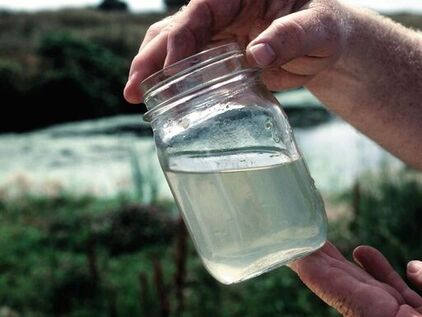 Water is important for us as individuals but it is also vital for the ecosystem to function. It supports the biochemistry of all life on the planet, and sustains growth as a foundational building block. Without fresh water, humans, wildlife and much of the environment simply could not exist. The easy access of tap water has made many of us feel as though we have an endless supply of clean water, but the harsh reality is that we don’t. A term frequently heard is ‘water conservation’...but how many of us truly understand what this means? Water conservation is the practice of using water efficiently to reduce unnecessary water usage. Due to Singapore's challenging history with fresh water, which you can read about here, our nation has placed a heavy emphasis on its conservation. Most local water conservation work is spearheaded by the Public Utilities Board (PUB), which helps to manage Singapore’s water supply through the innovation of new technology as well as the revision of public policy. However, there is only so much they can achieve without the nation’s population acting wisely to conserve this valuable and limited resource. In Singapore, we are very fortunate to have access to clean drinking water, however this results in many of us being unaware of how much water we use daily because of the privilege we have at our fingertips. In a recent poll by The Straits Times, 75% of Singaporeans had no idea what their water bill was. 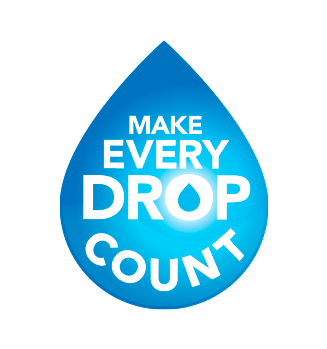 The team here at Wateroam did a little study to identify our personal water usages, and many of us were shocked to discover how much water is used by simple household tasks. Showering alone made up over 50% of our personal water use, with toilet flushing accounting for a whopping 11%. We did not track all of our activity, but we were pretty alarmed to see a simple hygiene task like brushing your teeth or washing your face uses over 12L of water each time the tap runs for 2 minutes. This highlights that many of us in Singapore and across the globe are unaware of the personal impact we have on water usage in our own countries. We encourage you to track your daily water usage and take PUB's water saver personality quiz. Are you a water warrior or a water woe? Find out here! Importance of Water Conservation in Singapore Citing a global study of 167 countries, Singapore topped the list of countries most likely to be “water-stressed” by 2040. Over the past few years, PUB has been rolling out many measures to help with the conservation of water, and some of these include the Water Conservation Awareness Programme and a 30% increase in water prices. PUB has also tried to inculcate a culture of water frugality through campaigns and roadshows to encourage Singaporeans to conserve water and discourage wastage in their everyday actions. Fresh water is a natural, finite resource that is scarce in the world. Only 3% of all water is freshwater and only 0.5% is available for drinking. As our populations continue to grow, it only makes sense that we need to preserve and conserve this precious natural resource. Now, for some easy to remember tips to save water at home PUB provides a set of tips for saving W-A-T-E-R at home, but here’s our take on it! When using the tap, do not leave it running
This is not an exhaustive list of water saving tips and you can always come up with different ways to save water on your own. PUB also has a free water saving kit to help you reduce as much as 5% of your monthly water consumption. Without a doubt, water security and water conservation efforts are likely to become an even greater focus for Singapore in years to come. But today, we can make a difference and make every drop count to ensure water is available for future generations. Sources: https://www.constellation.com/energy-101/water-conservation-tips0.htm https://www.straitstimes.com/opinion/drastic-action-needed-to-cut-water-use-here-world-water-day https://sciencing.com/role-water-ecosystem-5444202.html Blog Author: Joey Lim
Chief Editor: Michelle Falcone On Sunday, March 22nd, the world will be celebrating World Water Day for the 28th year. This day is used to advocate the sustainable management of freshwater resources and the theme this year explores the intrinsic link between water and climate change.  What exactly is climate change? Climate change refers to the drastic weather and climate related changes occurring on Earth as a result of the recent rise in global temperature. The planet’s climate has changed constantly over time, however the current period of warming has irrefutable links to human behavior and has transitioned more rapidly than any past periods. This significant increase is occurring too quickly for living beings to adapt, and the impacts have been detrimental to both humans and wildlife. According to the United Nations (UN), climate change is the defining issue of our time and a pivotal moment for us. Climate change is happening as we speak, visible daily where temperatures have risen here in Singapore and many other parts of the world. 2019 was the hottest year recorded in Singapore, and the second-warmest year globally. Antarctica has also recorded it’s hottest temperature ever, reaching 20.75° C (69.35° F) in February. This region of the world is one of the fastest-warming, with an average increase of 3° C (5.4° F) according to the World Meteorological Organization. The UN has advised that we should be limiting global warming to 1.5°C to 2°C, however we are way off track to meet the climate targets that have been set! The annual global temperature in 2019 was 1.1°C warmer than the average for 1850-1900, and an increase to 5°C could occur in this century if we do not make changes now! This is extremely important as global warming causes extreme weather events, which in turn cause catastrophic natural disasters across the planet. Global warming vs. Climate change Before we go into detail on how natural disasters are linked to climate change, a frequently asked question is “what is the difference between climate change and global warming?” While these two terms are often used interchangeably, many of us do not know the key differences between their definitions.
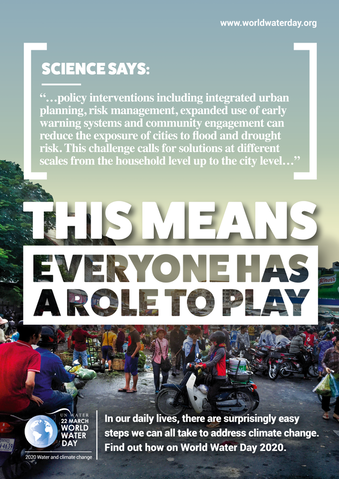 Natural disasters caused by climate change Now that we know the differences between the two terms, we can move on to a widely discussed issue of how exactly natural disasters are linked to climate change. Like its name suggests, natural disasters are bound to occur naturally, but climate change increases the intensity and/or frequency of these disastrous events. The number of climate-related disasters has tripled in the last 3 decades. A change in climate contributes to climate hazards and amplifies the risks that result from these extreme weather disasters. This means more violent cyclones, more extreme wild fires, and more severe droughts. Devastating floods have increased drastically, so we've written a blog on how to stay safe during a flood-related disaster. Click here to read more. Many of the catastrophic events that occurred last year were the result of weather pattern shifts, ultimately tied to climate change. Using climate models, scientists are now able to attribute specific disasters to climate change by analyzing simulations where variables related to the changing climate are removed. By comparing the results, scientists can identify which disasters are likely to have happened any way, and which may be a result of an affect like global warming. Aftermath of natural disasters The idiom, “after a storm comes a calm”, sadly does not fit in this narrative, as severe social and economic impacts arise from disasters. More often than not, the poorest and the most vulnerable are the most susceptible and the repercussions of such natural disasters can be detrimental. Sometimes communities haven't even recovered from one disaster before another one strikes. When such calamities happen, humans are on the receiving end. Basic necessities, like food, may be impossible to come by. Clean water becomes scarce; sanitation options become limited. With immediate action, these communities may be able to gain quick access to clean water for consumption, but even still, dirty or contaminated water may be used for all other activities, including hygiene, laundry, or even cooking. This can cause outbreaks of water-borne diseases, transmitted through a variety of ways. Although they may not be consuming the contaminated water directly, contact points like skin contact, bodily fluids and even fecal contact allow for the transmission of viruses and bacteria. This further emphasizes the importance of clean water in an emergency setting. We've written about viruses in water here and about clean water solutions during natural disasters here. What are we doing to combat climate change? Nations around the world have been pushing out plans and creating Acts to tackle this challenge. Put together by the parties of the United Nations Framework Convention on Climate Change (UNFCCC), the “Paris Agreement” was formed to combat climate change and to accelerate and intensify the actions and investments needed for a sustainable low-carbon future. Other countries like Indonesia, have committed to cut emissions by 29 percent from business-as-usual levels by 2030 under the National Action Plan on Climate Change Adaptation.
Government action alone will not be sufficient. Everyone has a role to play to promote sustainability and to mitigate climate change. We need to start worrying about climate change now and take action immediately! Although still nascent, we can already see the impacts global warming has caused to people around the world. Let us all do our part in fighting climate change to reduce the long-term consequences, ensuring that in the upcoming decades, the generations ahead are able to have a livable Planet Earth. Have you read our recent blogs? Sources: https://www.unwater.org/water-facts/water-sanitation-and-hygiene/ https://www.unwater.org/water-facts/disasters/ https://www.straitstimes.com/singapore/singapore-budget-2020-new-coastal-and-flood-protection-fund-to-protect-singapore-against https://climate.nasa.gov/resources/global-warming-vs-climate-change/ https://www.usgs.gov/faqs/what-difference-between-global-warming-and-climate-change-1?qt-news_science_products=4#qt-news_science_products https://www.climate.gov/news-features/climate-qa/whats-difference-between-global-warming-and-climate-change Blog Author: Joey Lim
Chief Editor: Michelle Falcone
Did you know that floods account for most of today’s weather-related natural disasters? They have affected 2.3 billion between 1995 and 2015, with a vast majority of those affected living in Asia alone. As the annual average number of floods increases drastically over recent years, do you know how to stay safe during a flood?
What causes floods?
Floods occur for a myriad of reasons: as the world's climate changes, we are seeing a rise in weather-related floods; but some major flood disasters are also caused by man made human error. We'll talk about that later!
By comparison, excessive and intense rainfall over a short period of time is a very common cause of today’s dangerous flash floods. Extreme rains cause the drainage system to be unable to keep up with the rate of rainfall. The situation is further exacerbated when the afflicted area has a river flowing through it, as the rainfall can cause the river to overflow into surrounding communities. Landscapes that have been changed through deforestation have less of a natural barrier to slow floods and protect communities.
With global precipitation in an upward trend, it's likely that we'll see an increasing number of floods as well.
What is most unfortunate is that the dam failures caused by a lack of funding for upkeep and maintenance are completely preventable. The video above from The Guardian captures the immense scale of a flash flood resulting from a dam failure in Brazil.
Dangers of Flood Water
Flash flooding is the most dangerous type of flooding as it’s unpredictable and involves fast moving water. With the increasing frequency of extreme weather events, we can expect an increase in the frequency of flash floods around the world. Furthermore, floodwater is usually underestimated by people, without knowing that it only requires 15 centimetres of water to sweep a person off their feet.
Aside from the immediate dangers of flash flooding, floodwater in general is a dangerous entity on its own as it’s usually contaminated with sewage and carries physical debris that can cause trauma upon being struck. Preparing for a flood
If you happen to live in an area that’s at risk of flooding, the following are some measures you can take to prepare if a flood is imminent
What to do during a flood
Although they are not the deadliest type of natural disaster, floods occur at a high frequency and have the potential to displace a large number of people, especially among the lower-income regions. As countries develop economically, they’re better able to deal with the human cost of floods through better infrastructure and flood response networks.
However, economic progress and building of infrastructure takes time and the people currently living in these flood-prone regions do not have that luxury of time. Until these improvements come, education on flood preparation and response plays an important role in saving lives.
Think you might be affected by a flood?
Fill in the contact form below to find out more about the water filtration solutions we offer for flood relief!
Give clean water to a child in need!
Your contribution will support our efforts to provide a clean, safe and stable supply of drinking water for those who need it most in the world. Will you join us on our journey to end prolonged thirst? Please select the drop-down for other quantities
*Please refer below for terms and conditions
You can also sign up for our newsletter by filling out the form below.
Sign up for our newsletter!
 
Blog Author: Jien Wei Tan
Chief Editor: Michelle Falcone |
Want more?Click below to see what other blog topics might peak your interest
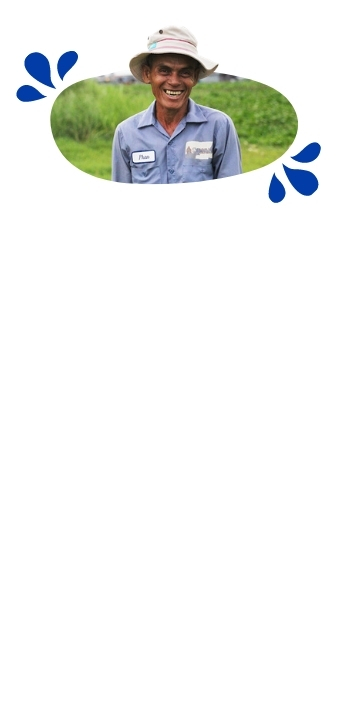


Social Awareness Blog Archives
August 2022
|
- About Us
- Products
- Solutions
- Resources
- Get Involved
-
Blog
- The Global Water Situation
-
Facts about Water
>
- Water supplies for crisis
- WaSH During Emergencies
- Well Water Cleaning and Filtration Guide: Southeast Asia
- Gravity-fed Water Systems: Water Purification and Filtration setups in Southeast Asia
- A Guide to Rural Rainwater Harvesting and Filtering
- Water Shortages and Their Effect on Children in Rural Schools
- WaSH Planning and Design Framework Resources for Indonesia and the Philippines
- Rural Community Water Supply: Water Systems in Villages
- Info on our Products
- Impact Stories
- Upcoming & Past Events
- Contact
- Store
- About Us
- Products
- Solutions
- Resources
- Get Involved
-
Blog
- The Global Water Situation
-
Facts about Water
>
- Water supplies for crisis
- WaSH During Emergencies
- Well Water Cleaning and Filtration Guide: Southeast Asia
- Gravity-fed Water Systems: Water Purification and Filtration setups in Southeast Asia
- A Guide to Rural Rainwater Harvesting and Filtering
- Water Shortages and Their Effect on Children in Rural Schools
- WaSH Planning and Design Framework Resources for Indonesia and the Philippines
- Rural Community Water Supply: Water Systems in Villages
- Info on our Products
- Impact Stories
- Upcoming & Past Events
- Contact
- Store



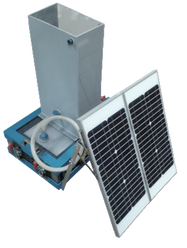
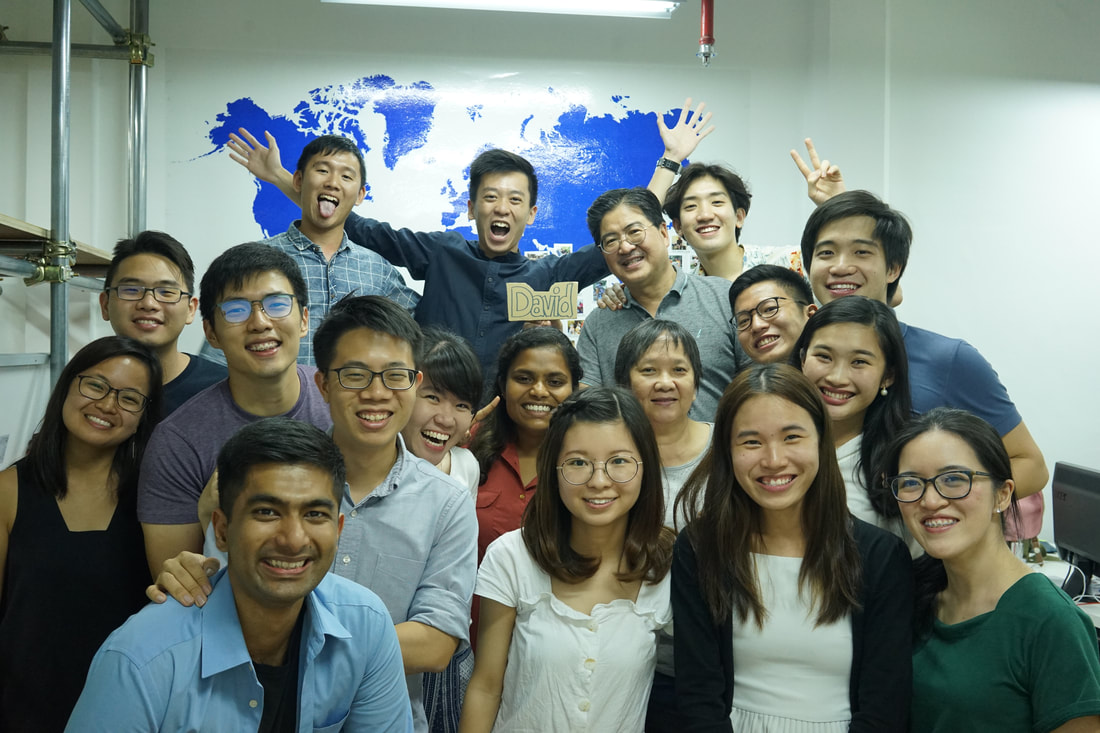

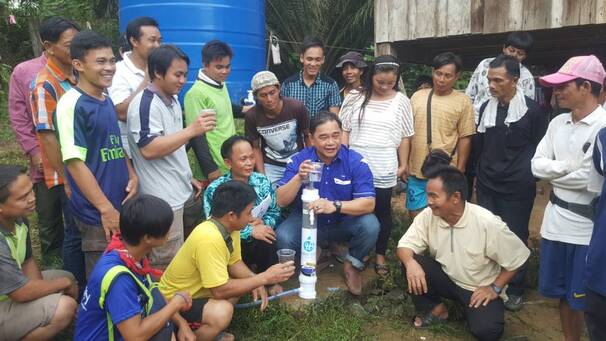
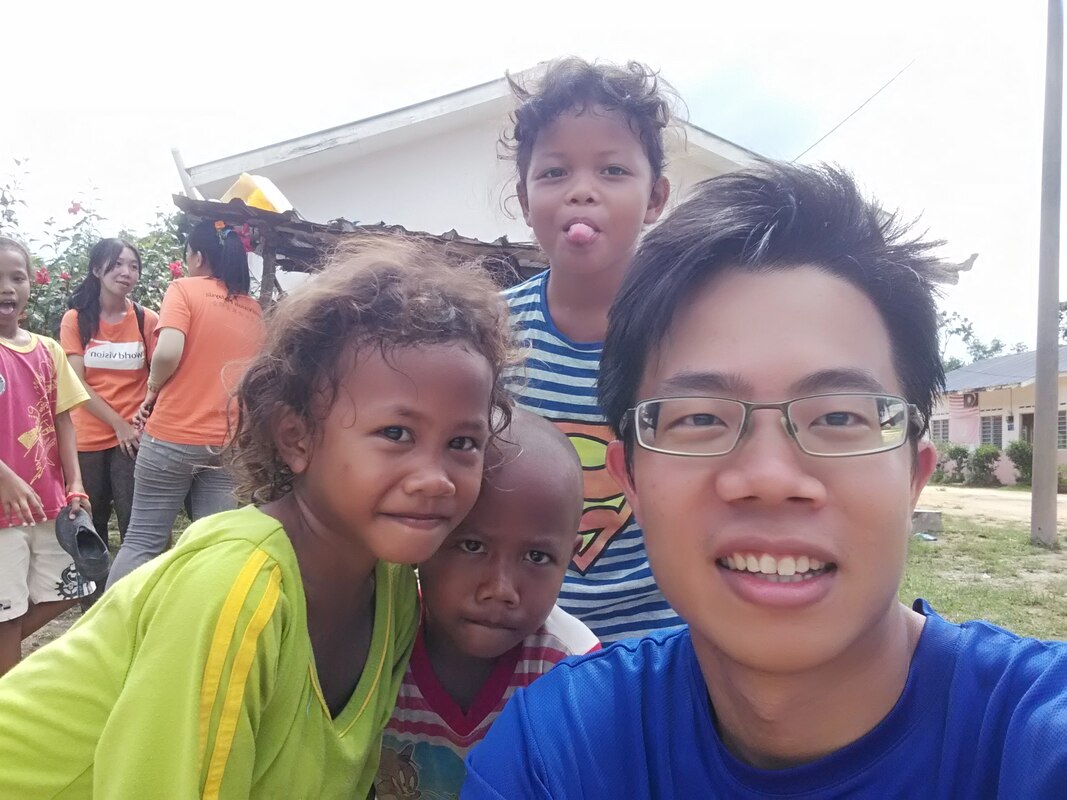
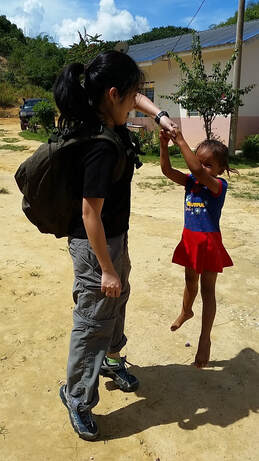

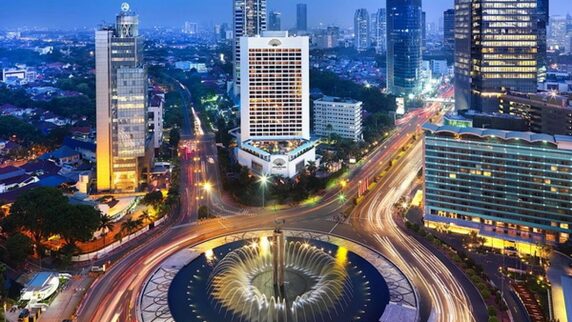
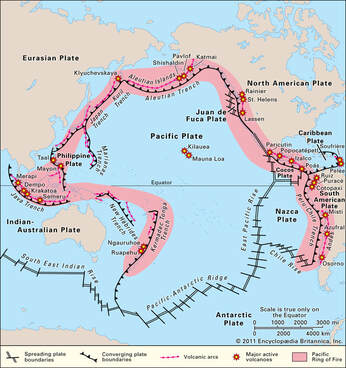
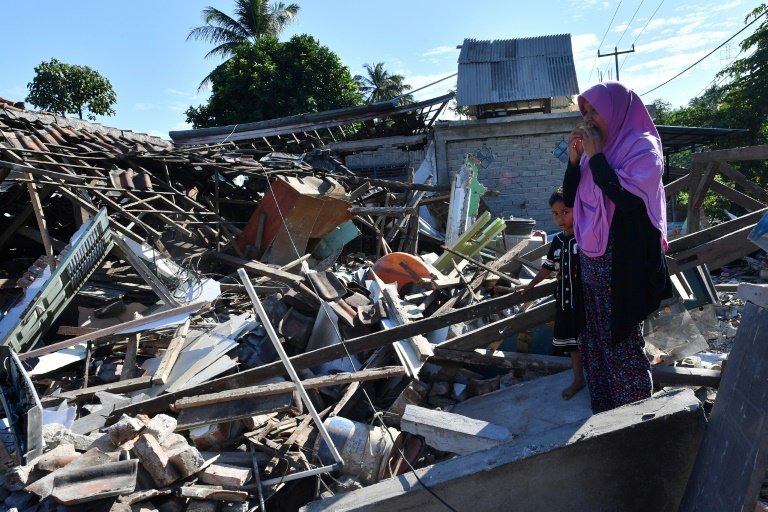

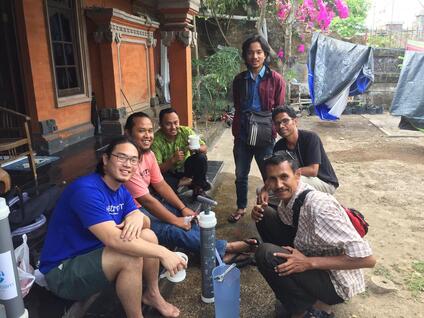



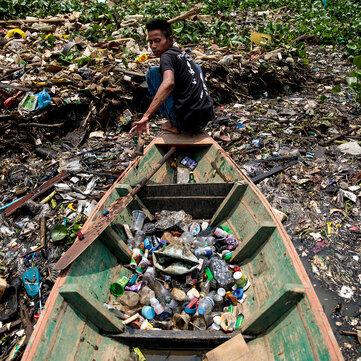
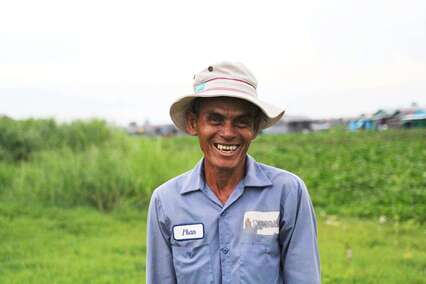
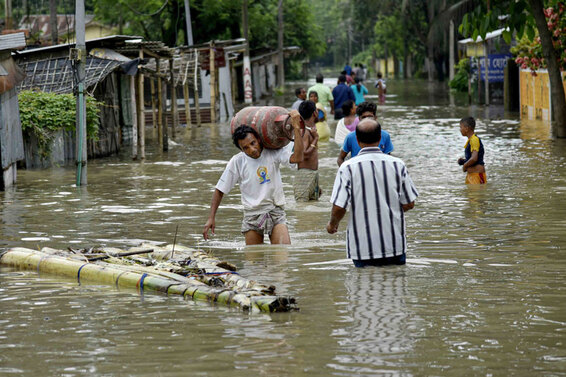



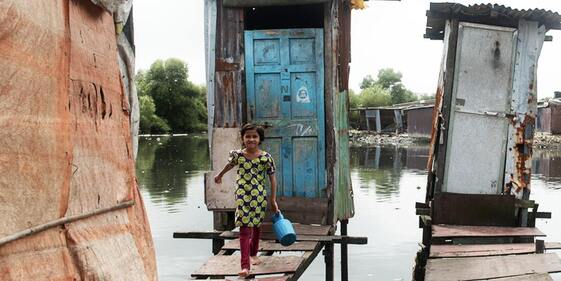

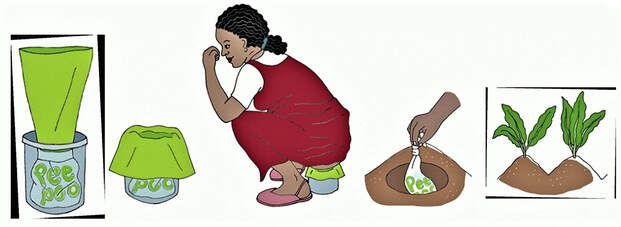


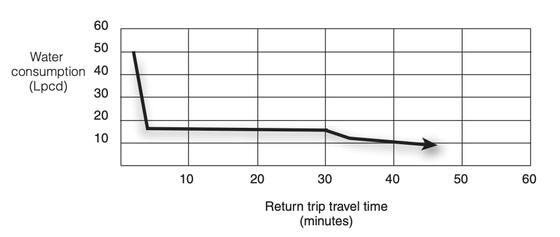
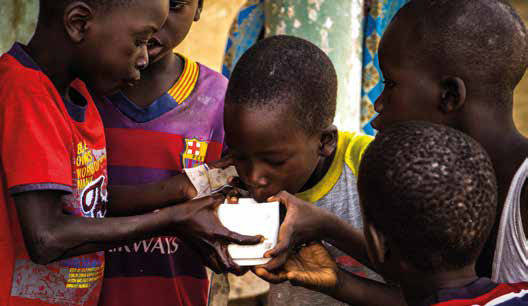



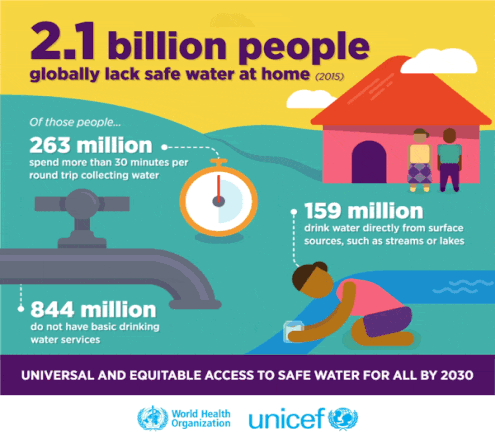






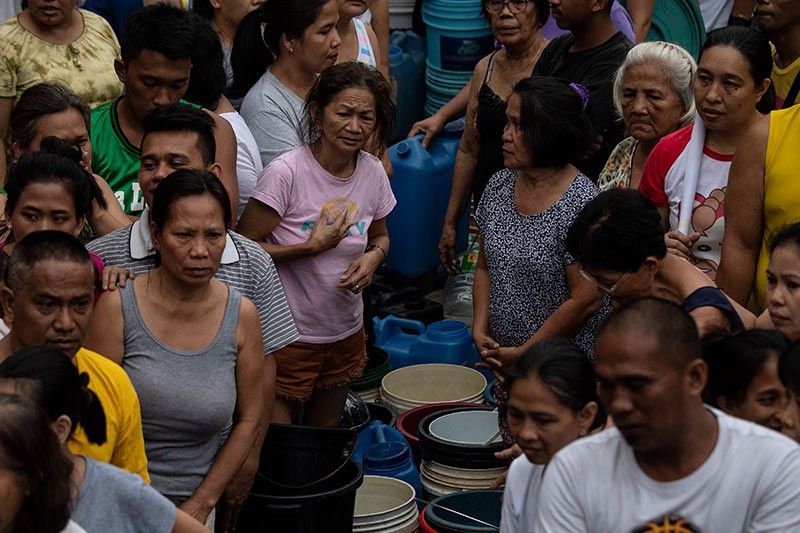


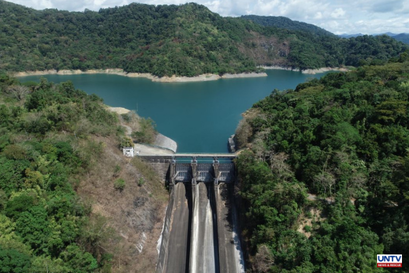
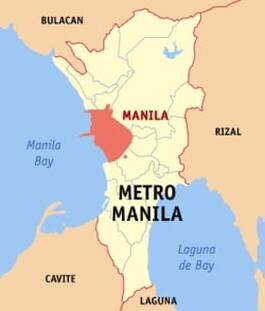
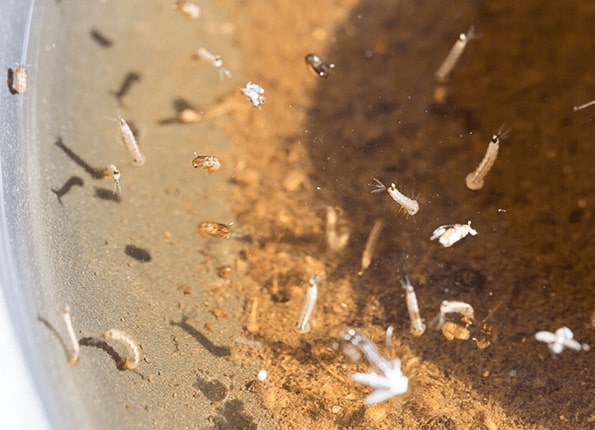
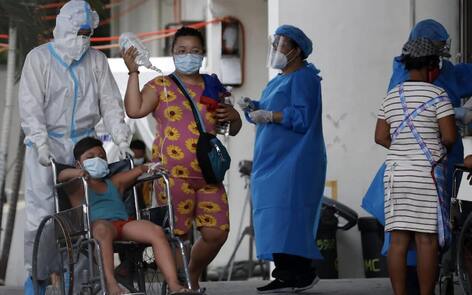
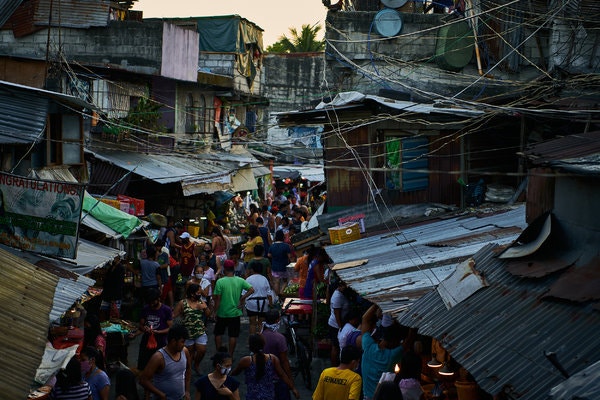

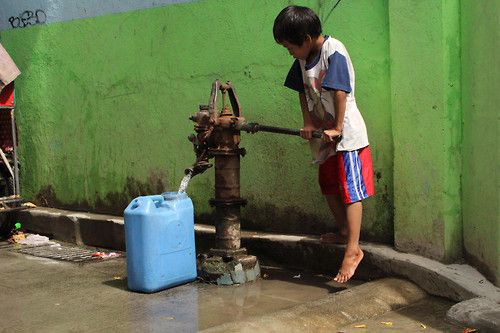

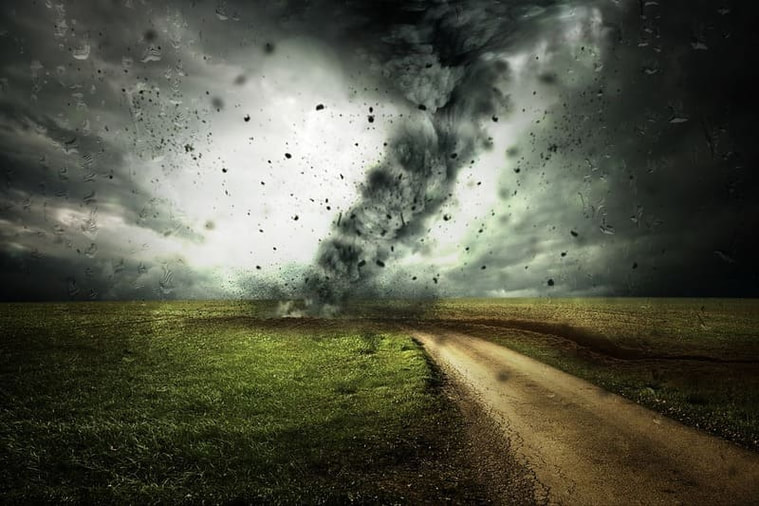

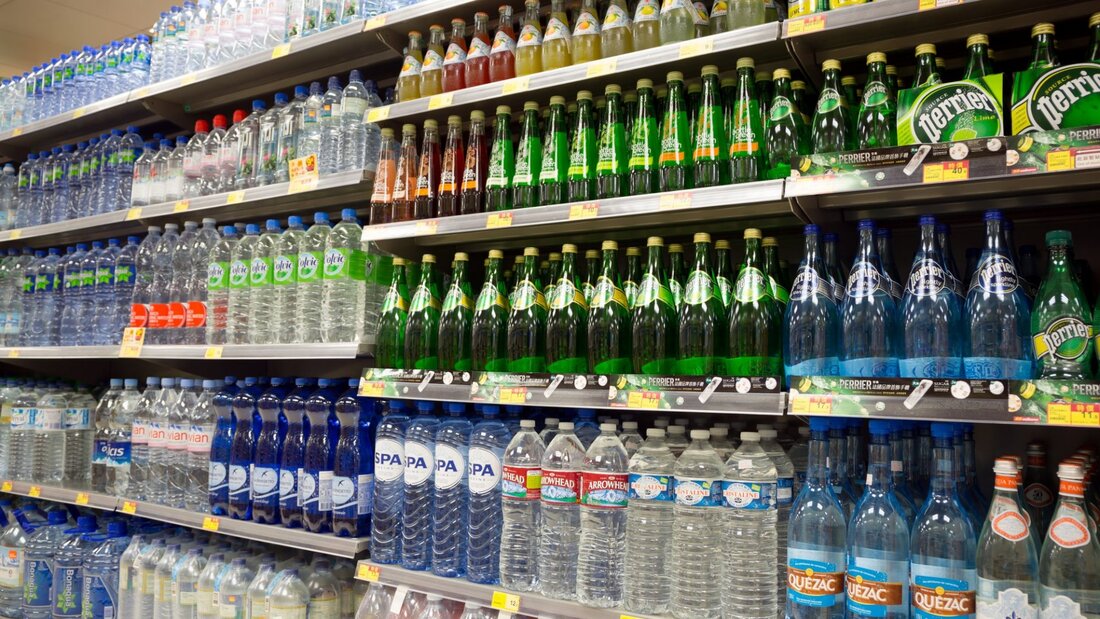
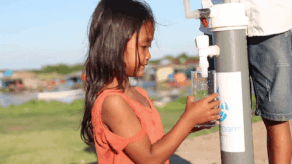
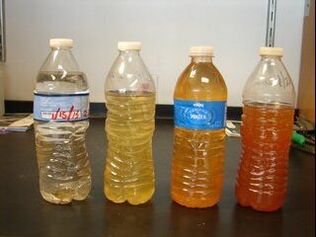
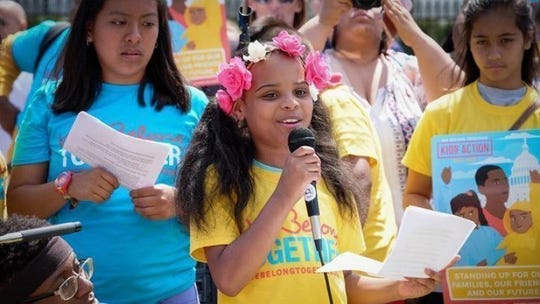

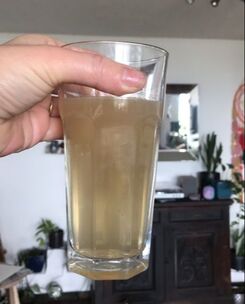
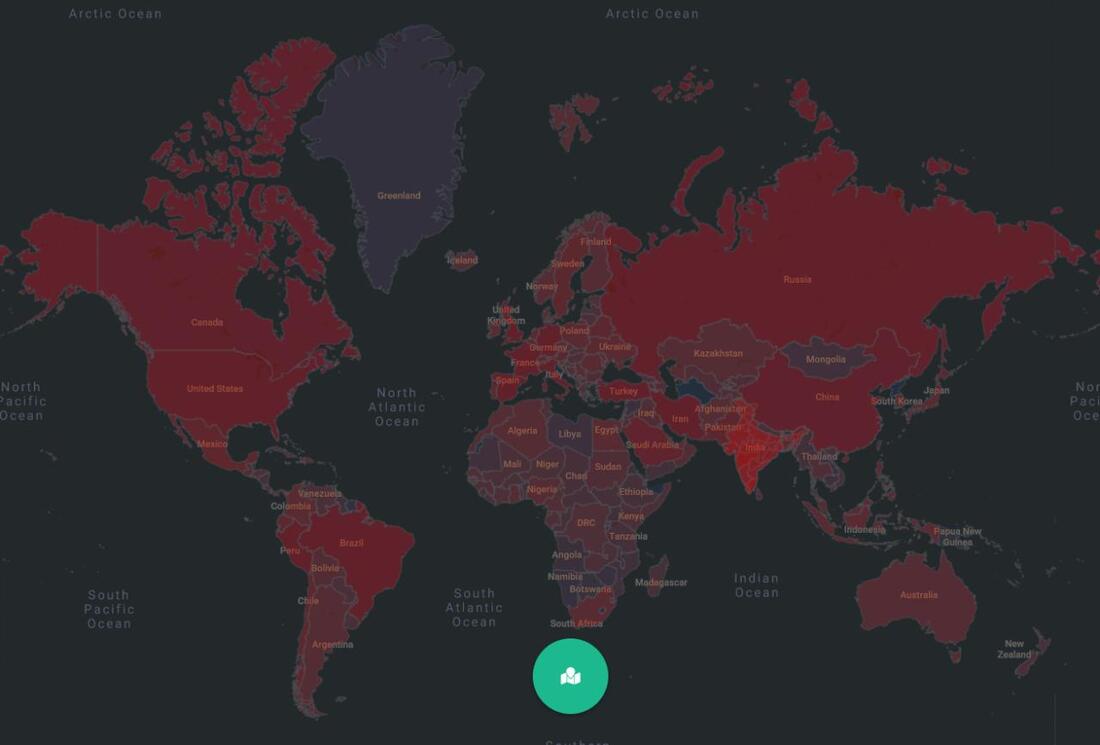
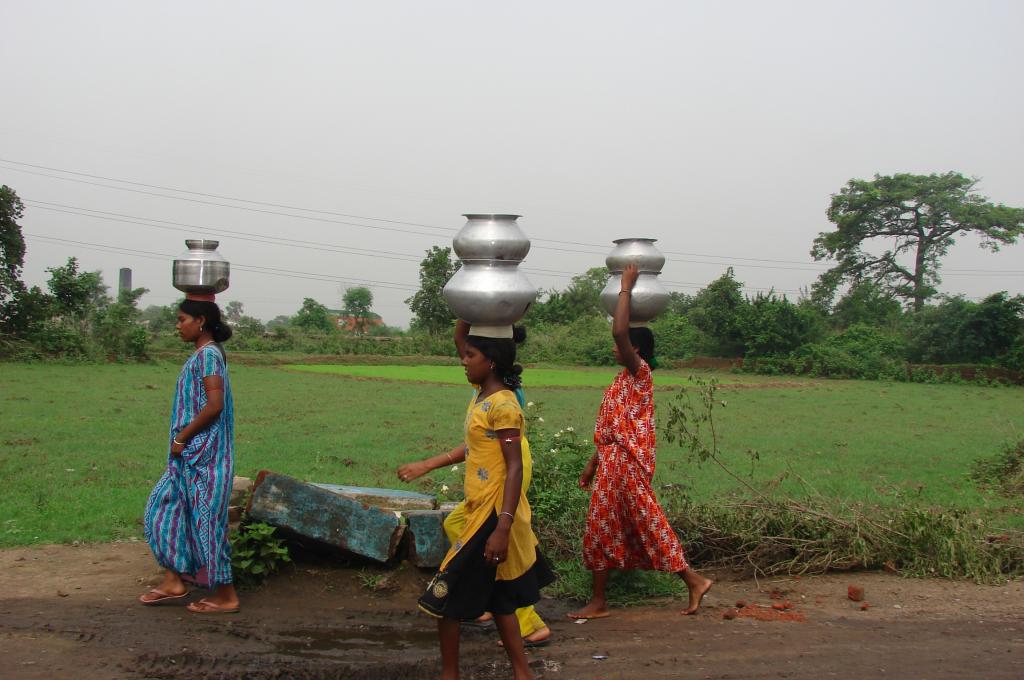
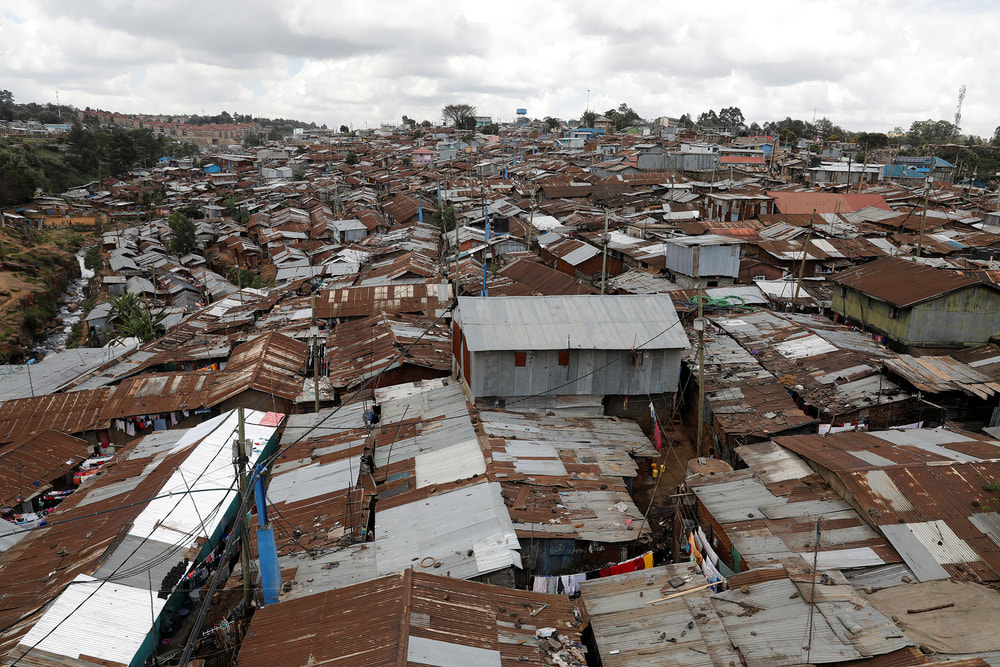
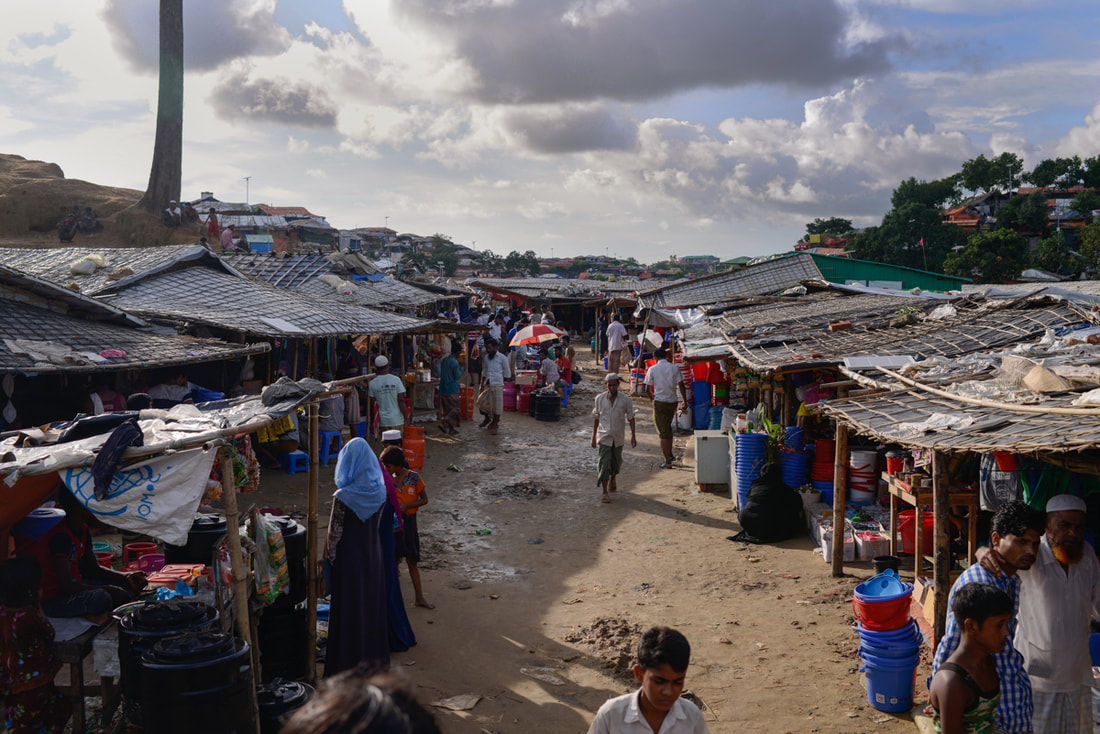

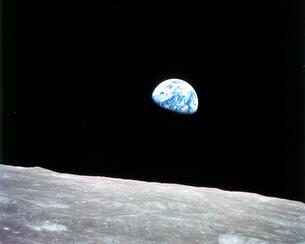

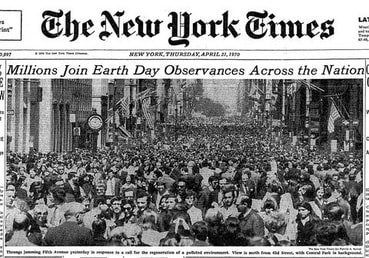
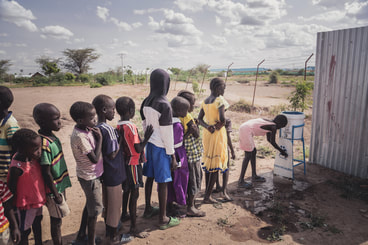




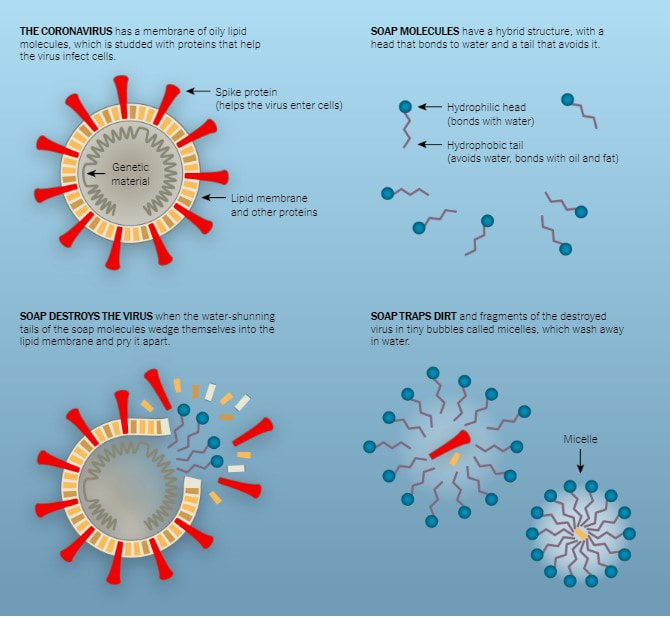

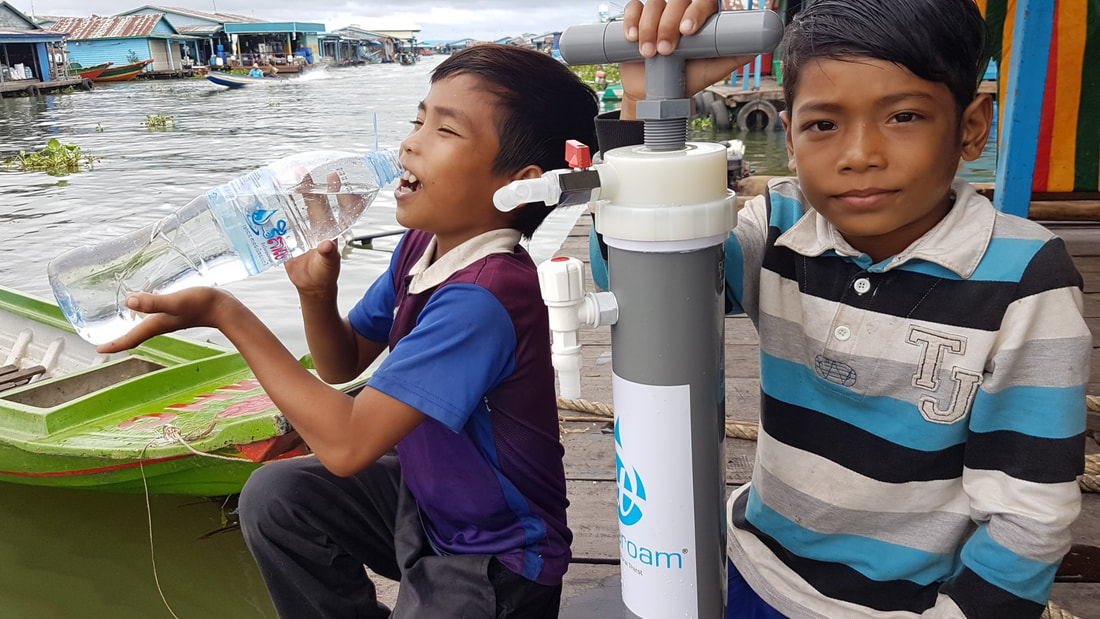

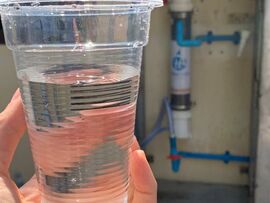


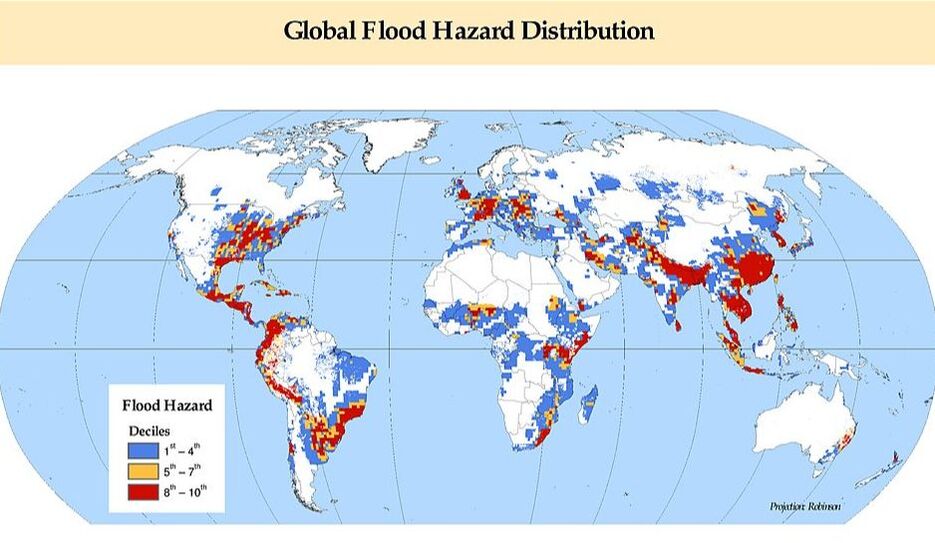
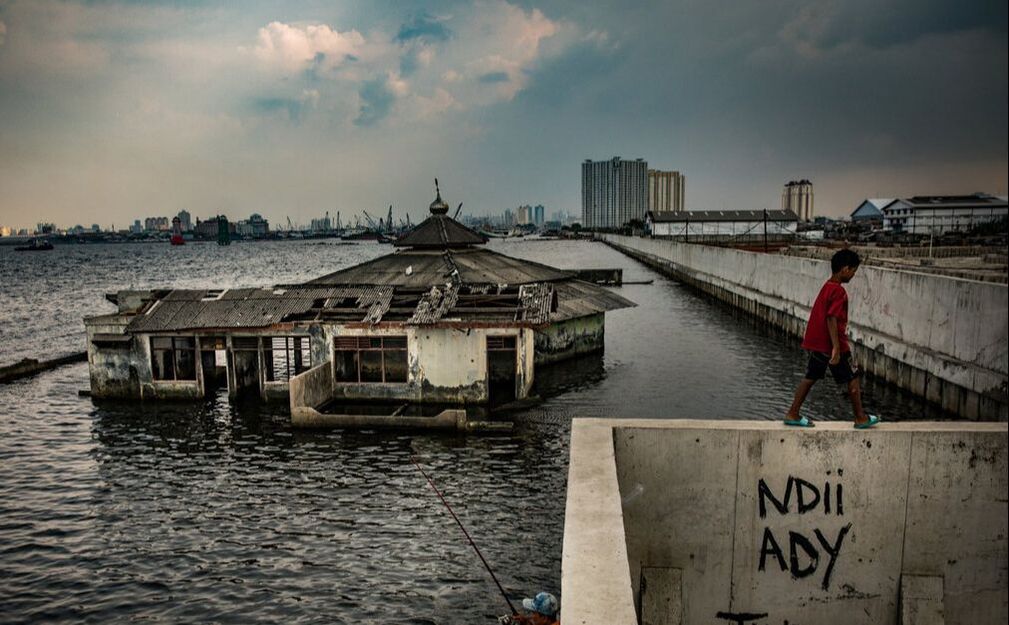








.jpg)